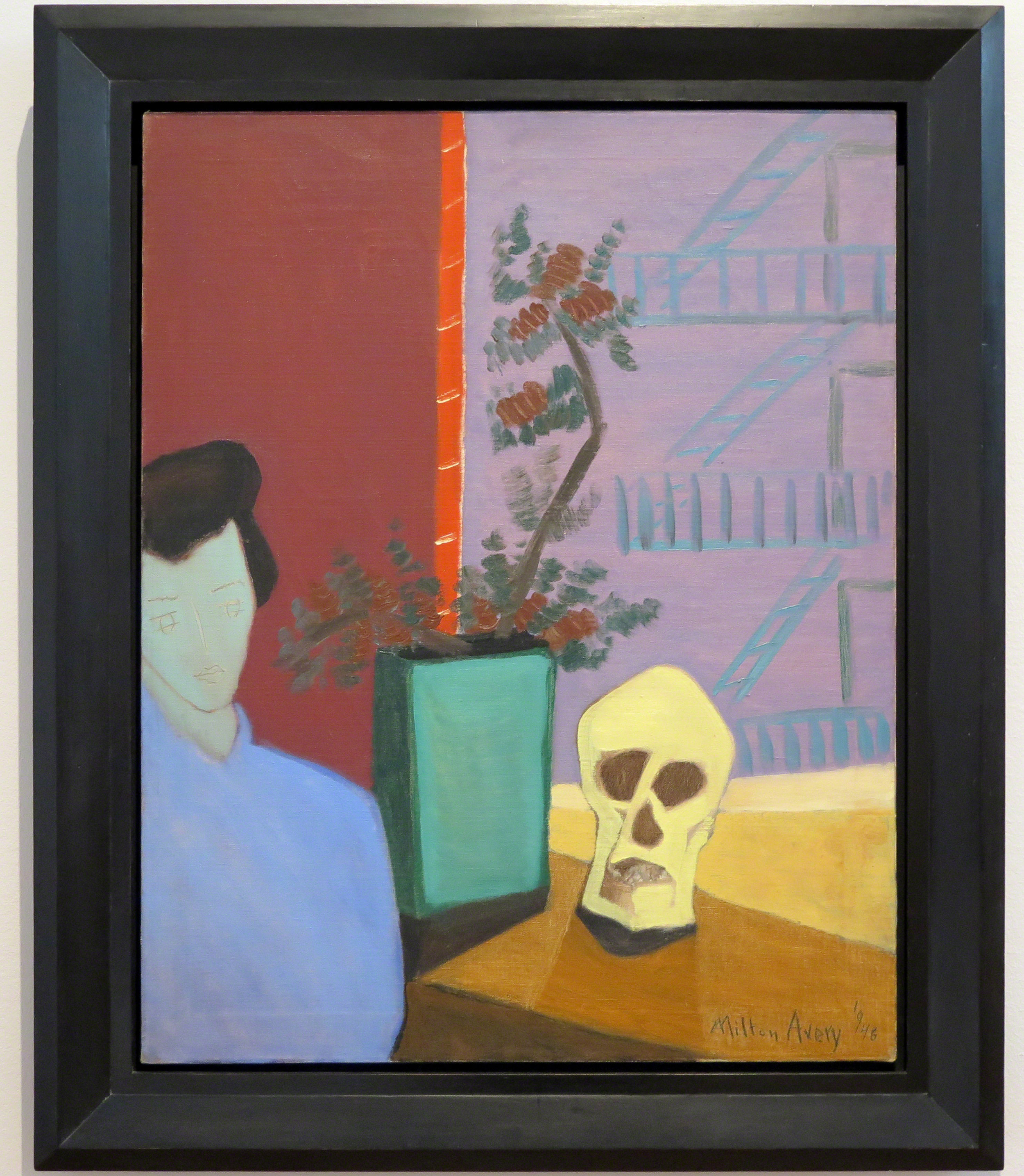
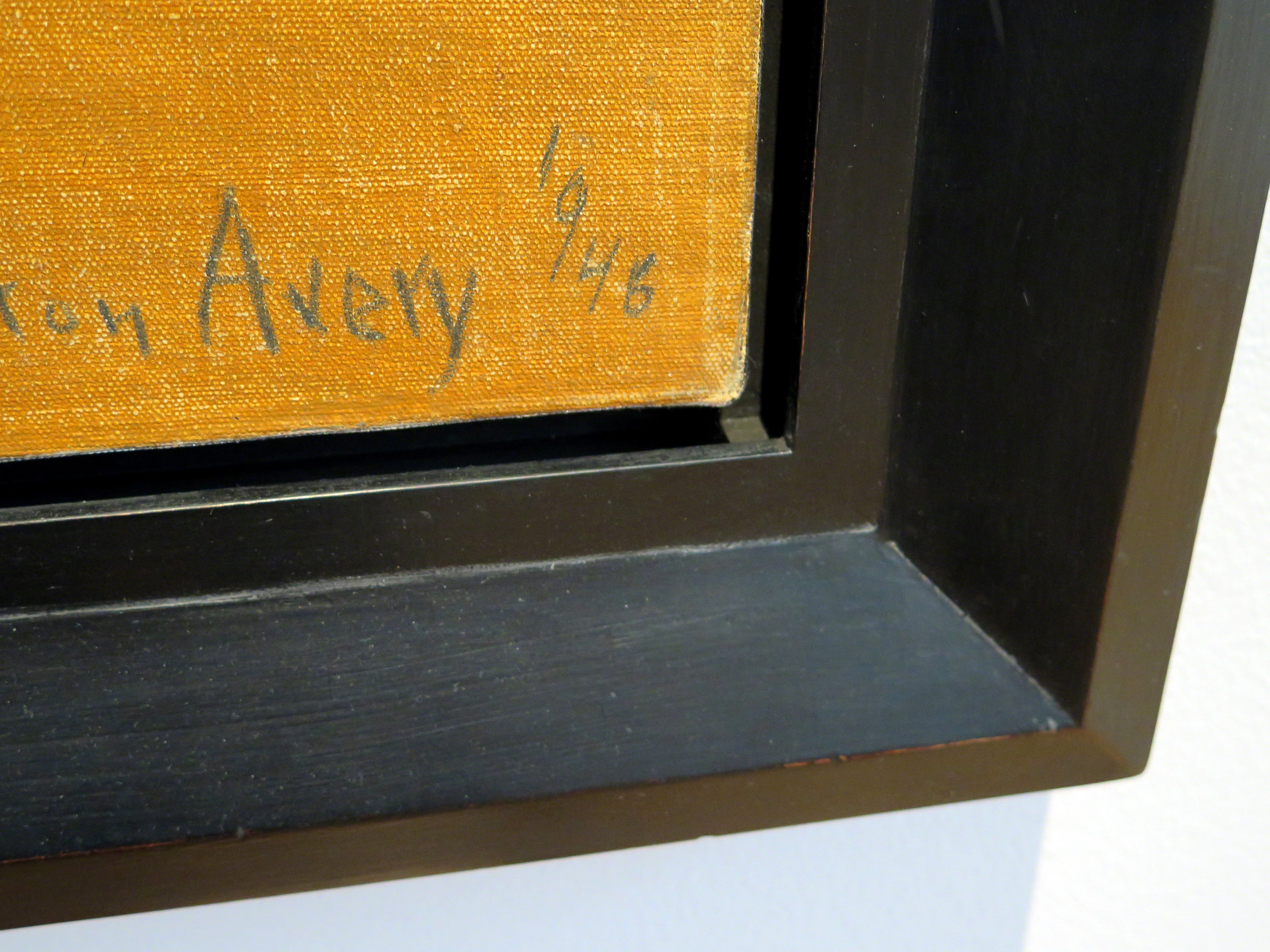
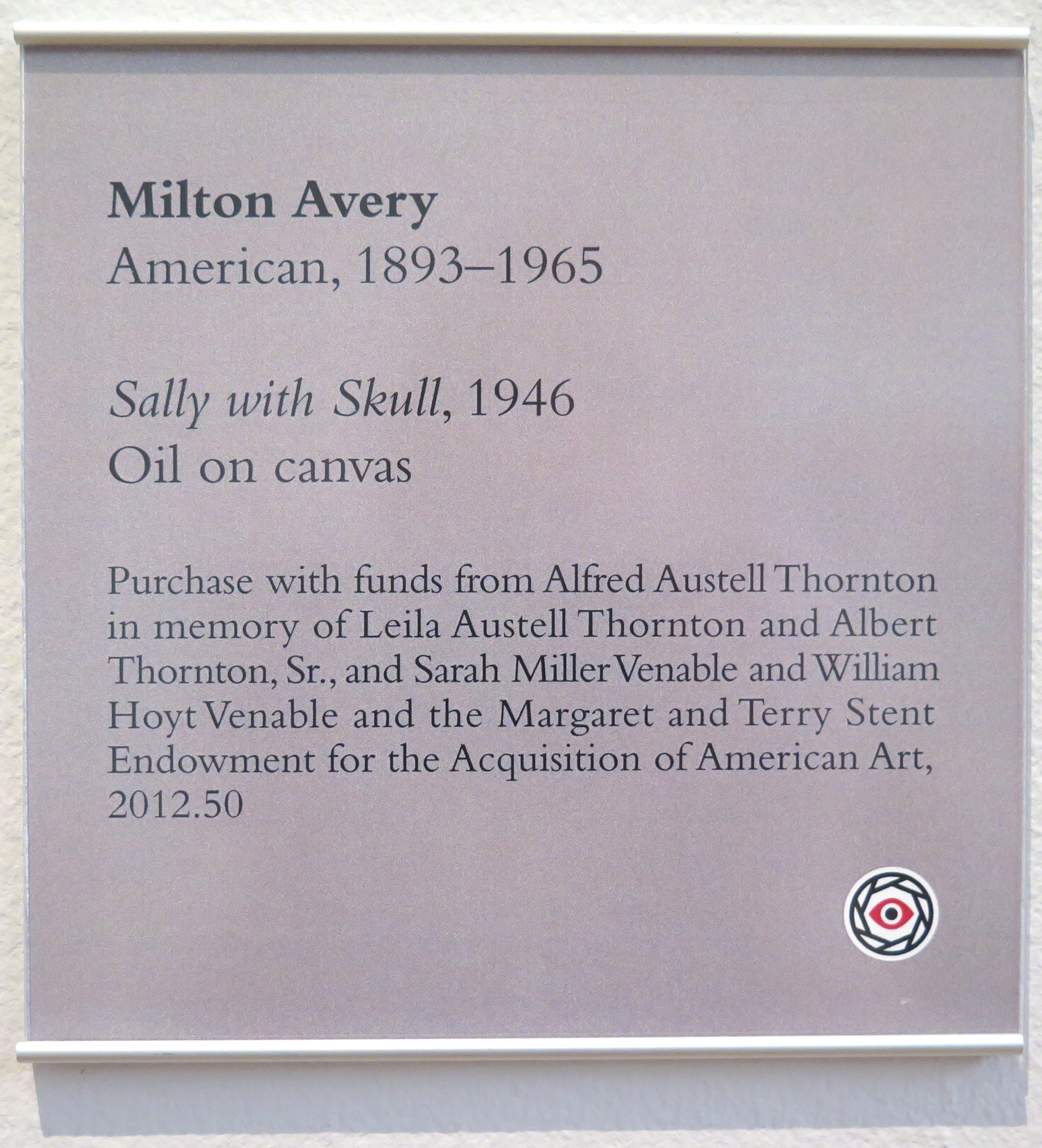
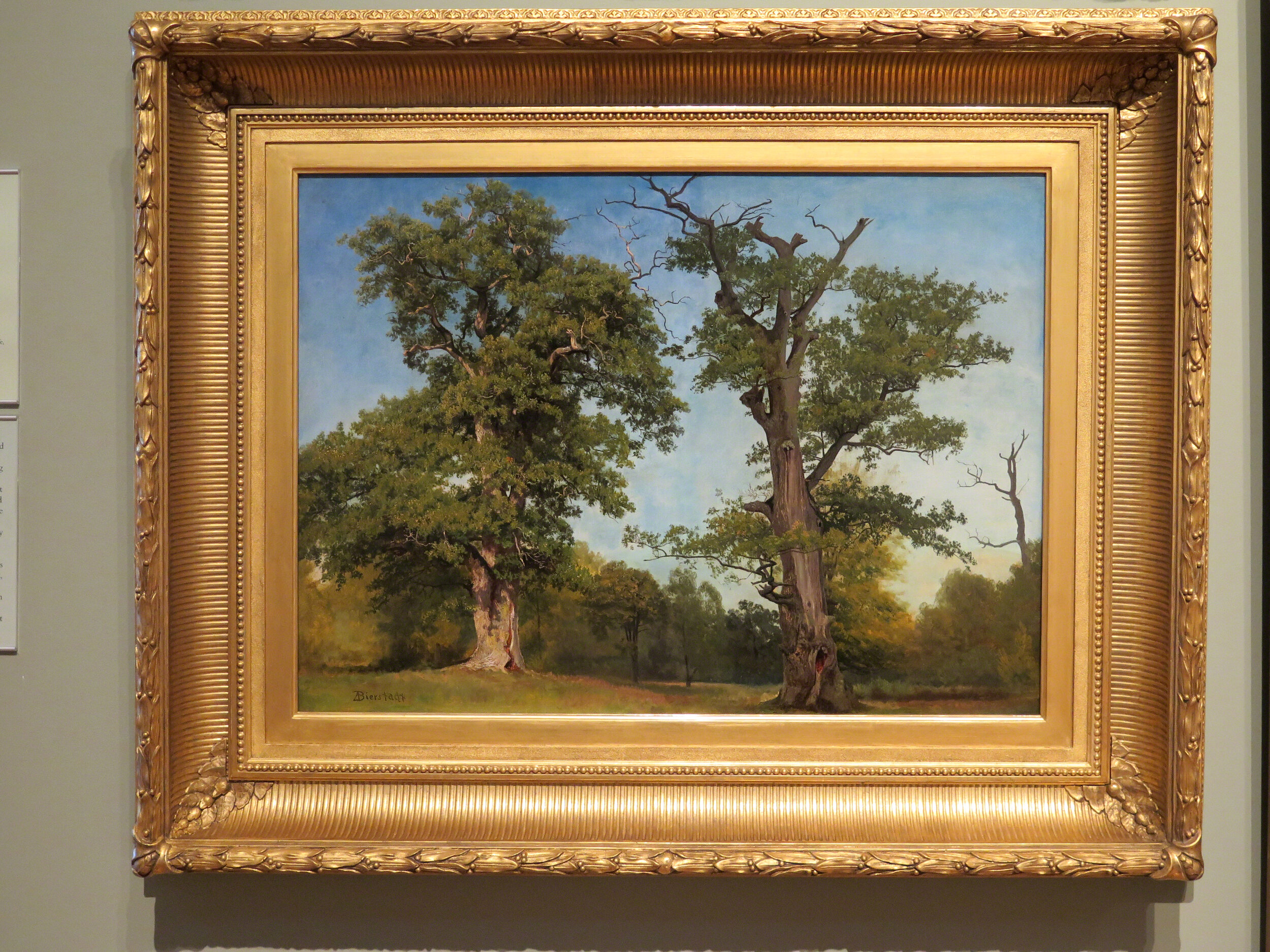
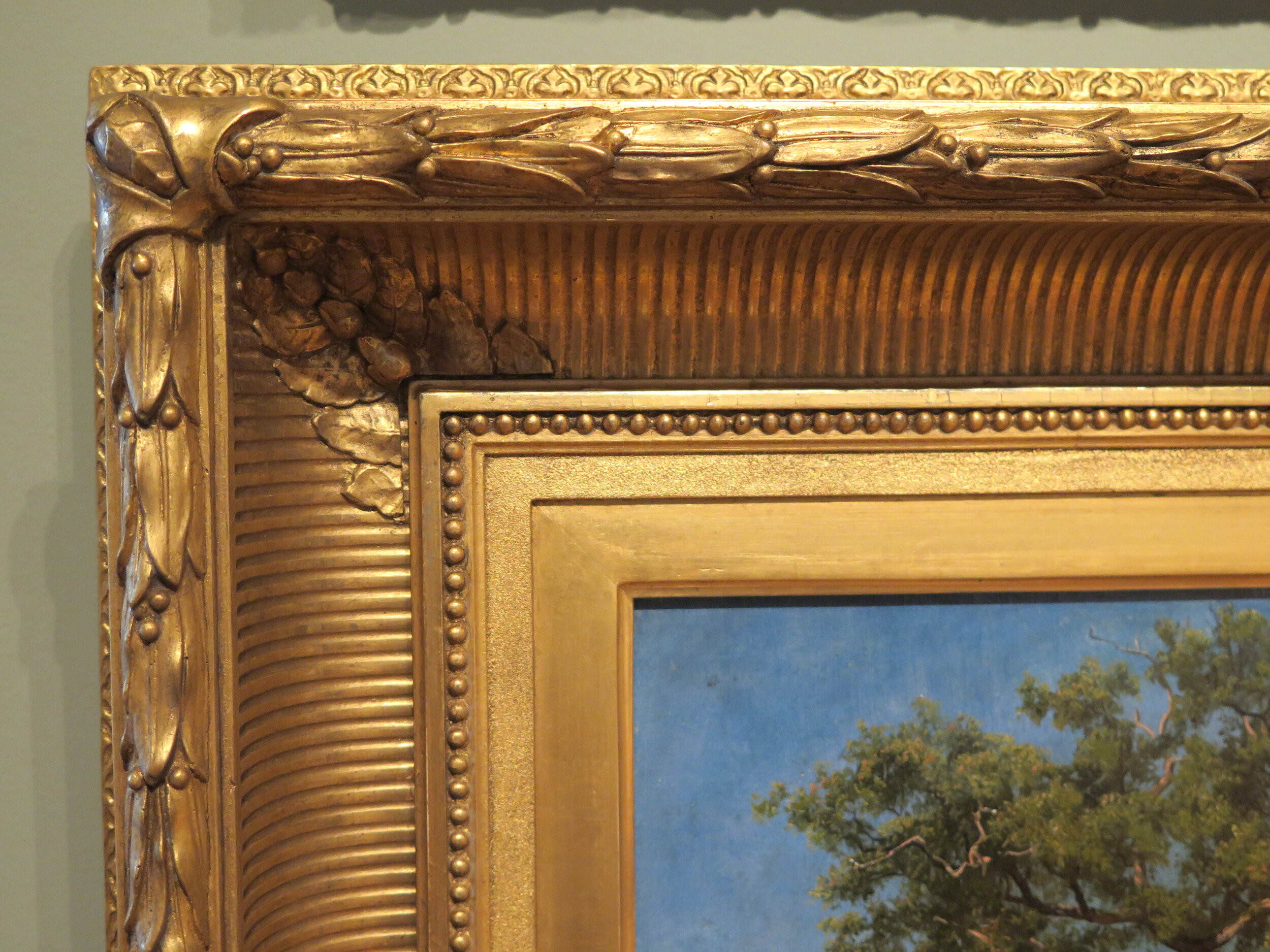



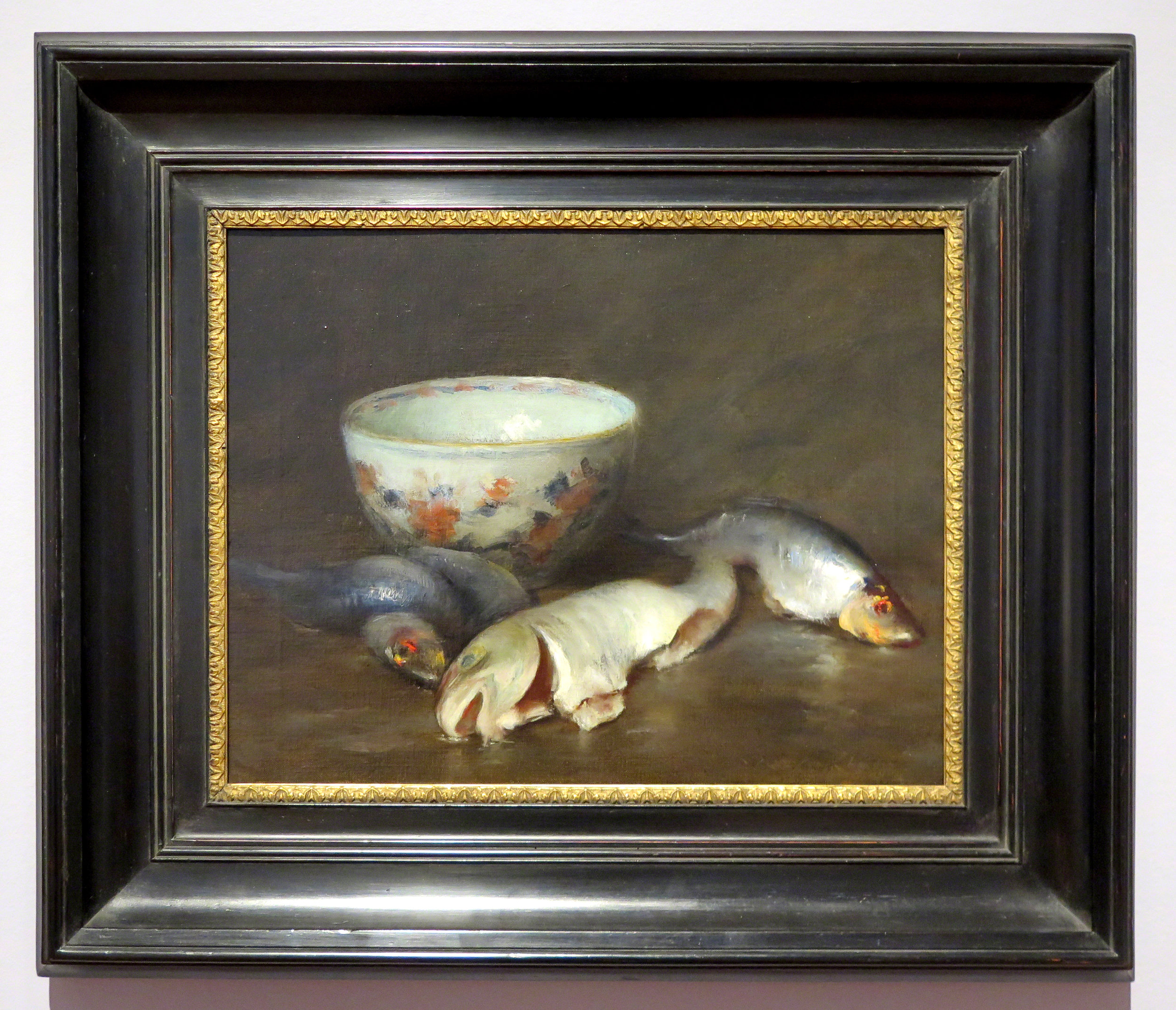
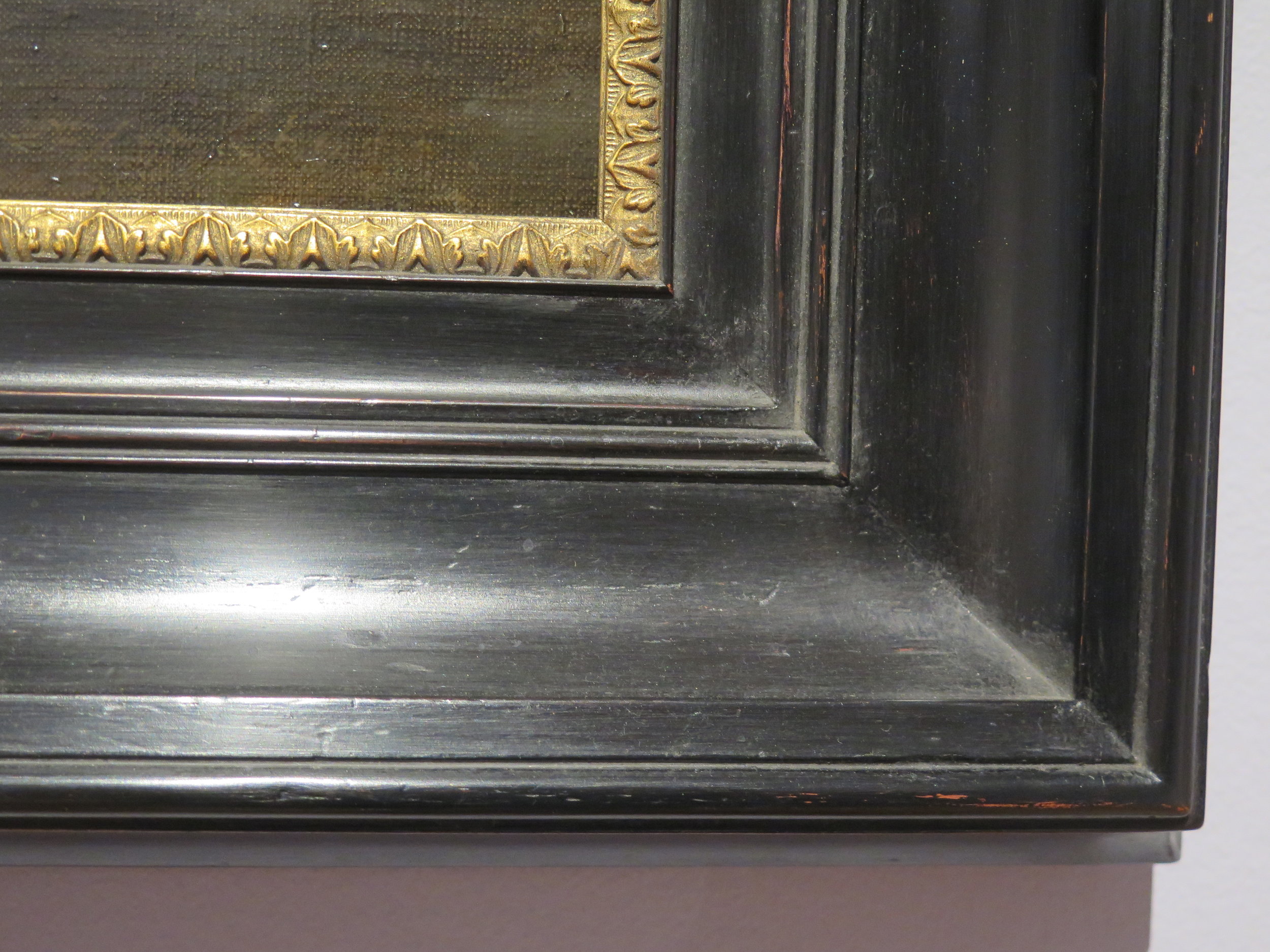
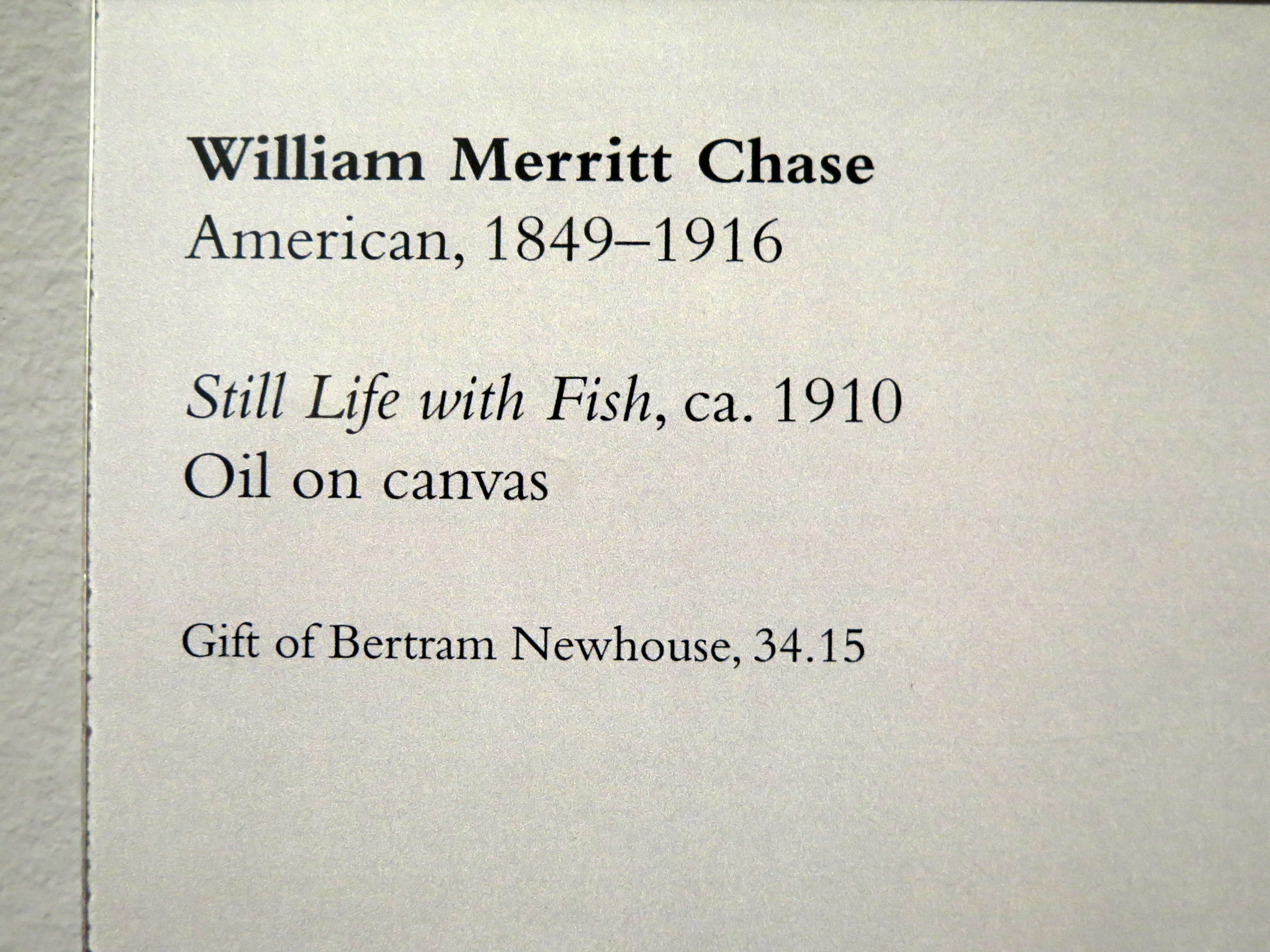
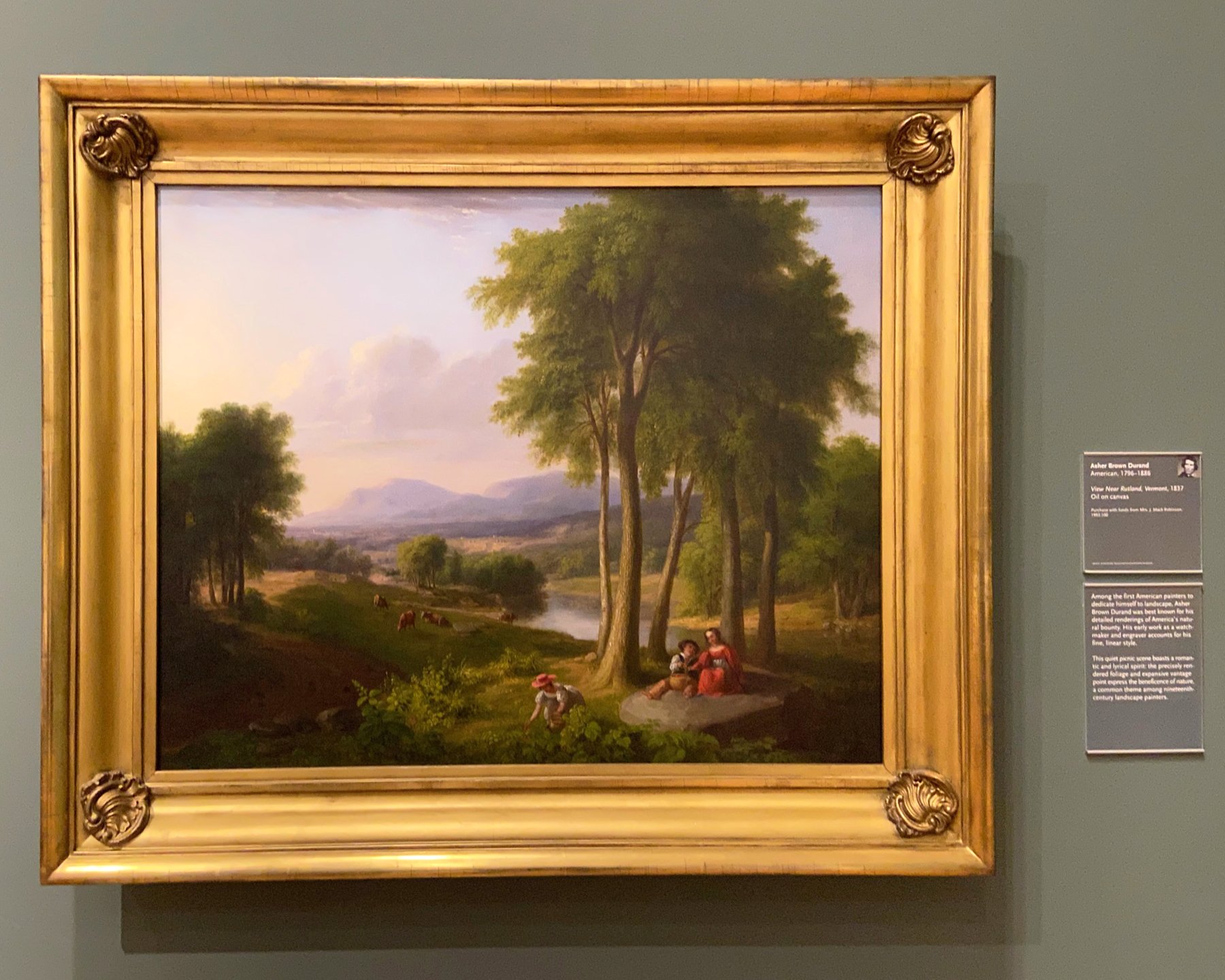


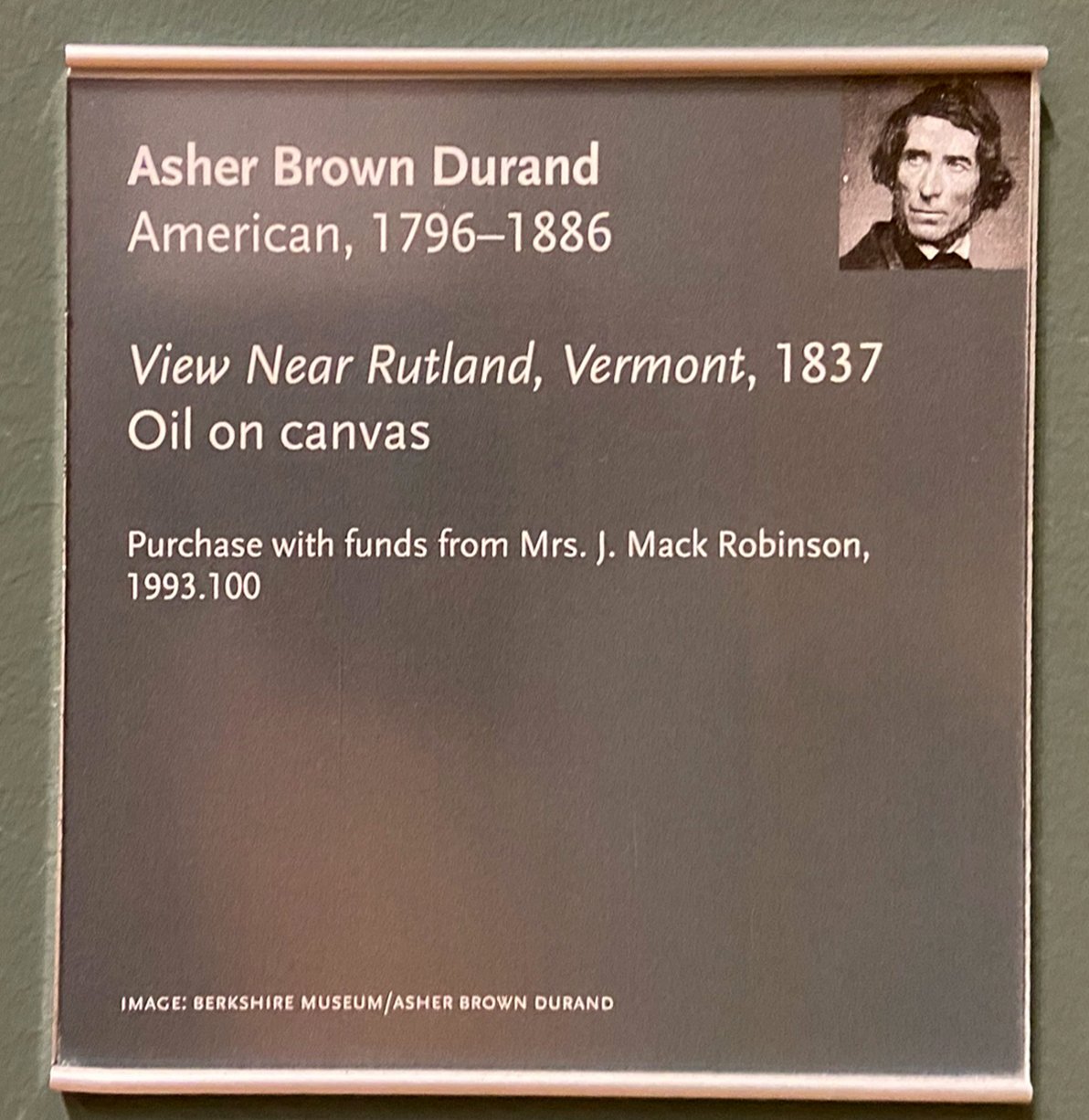


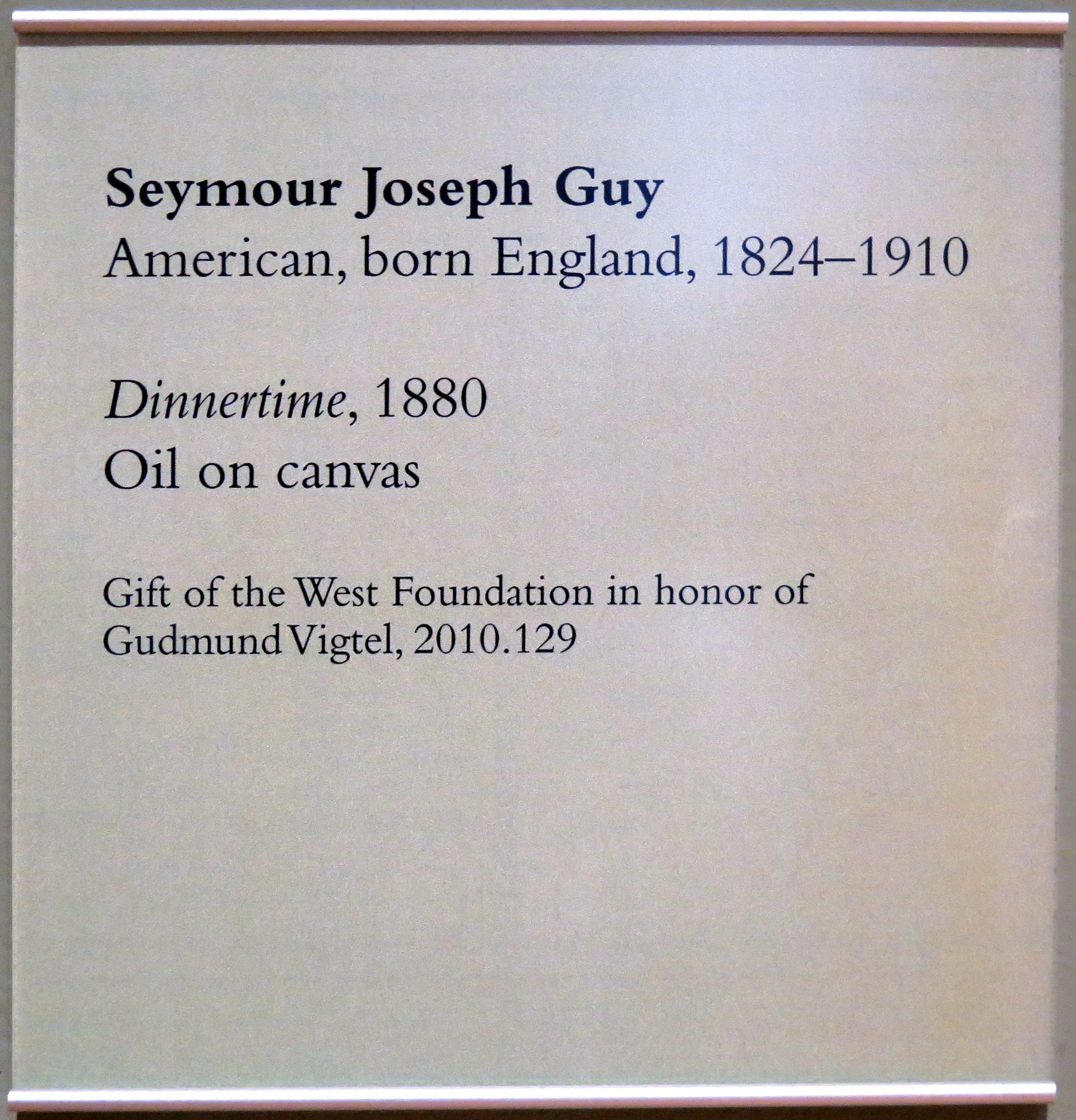
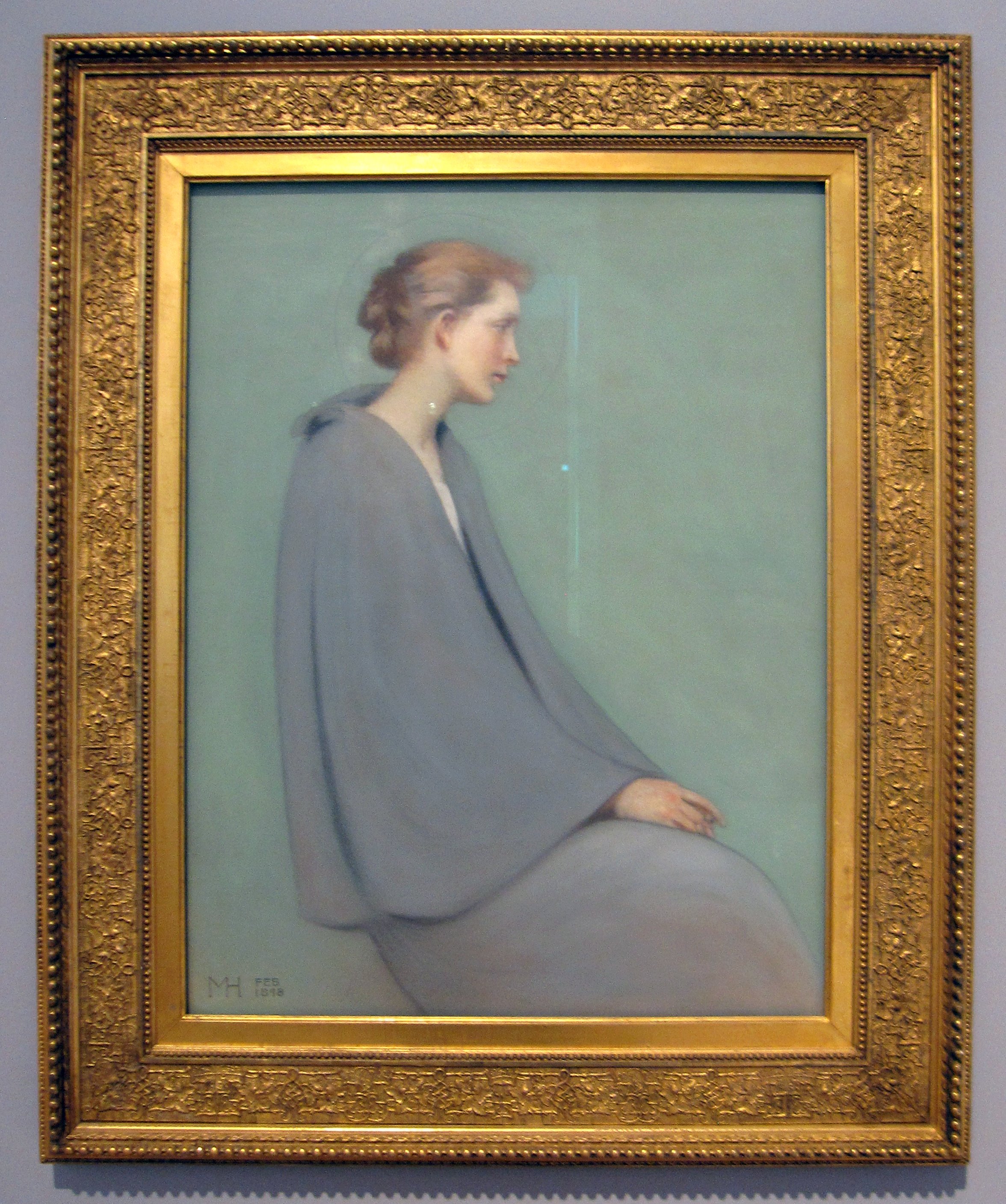

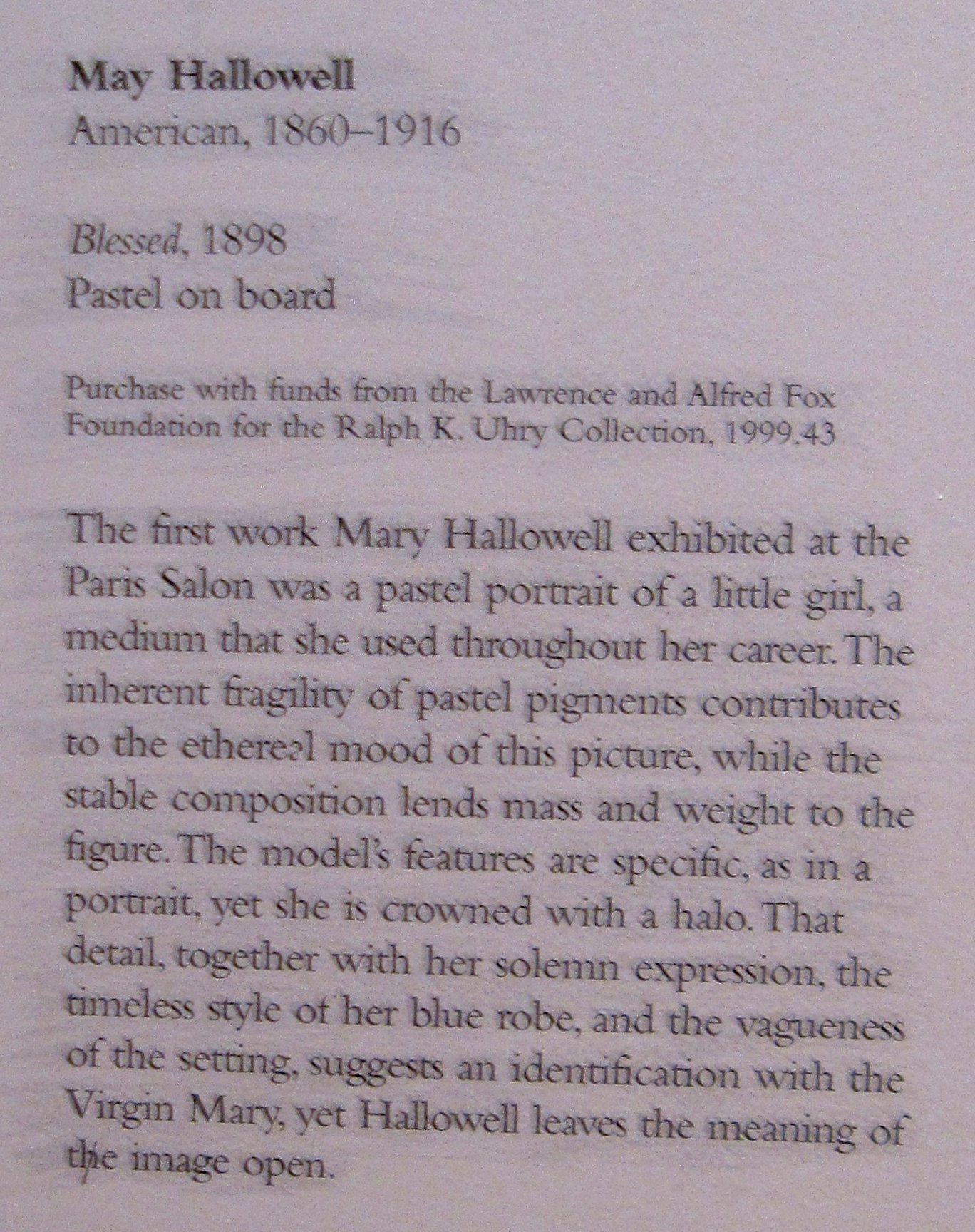
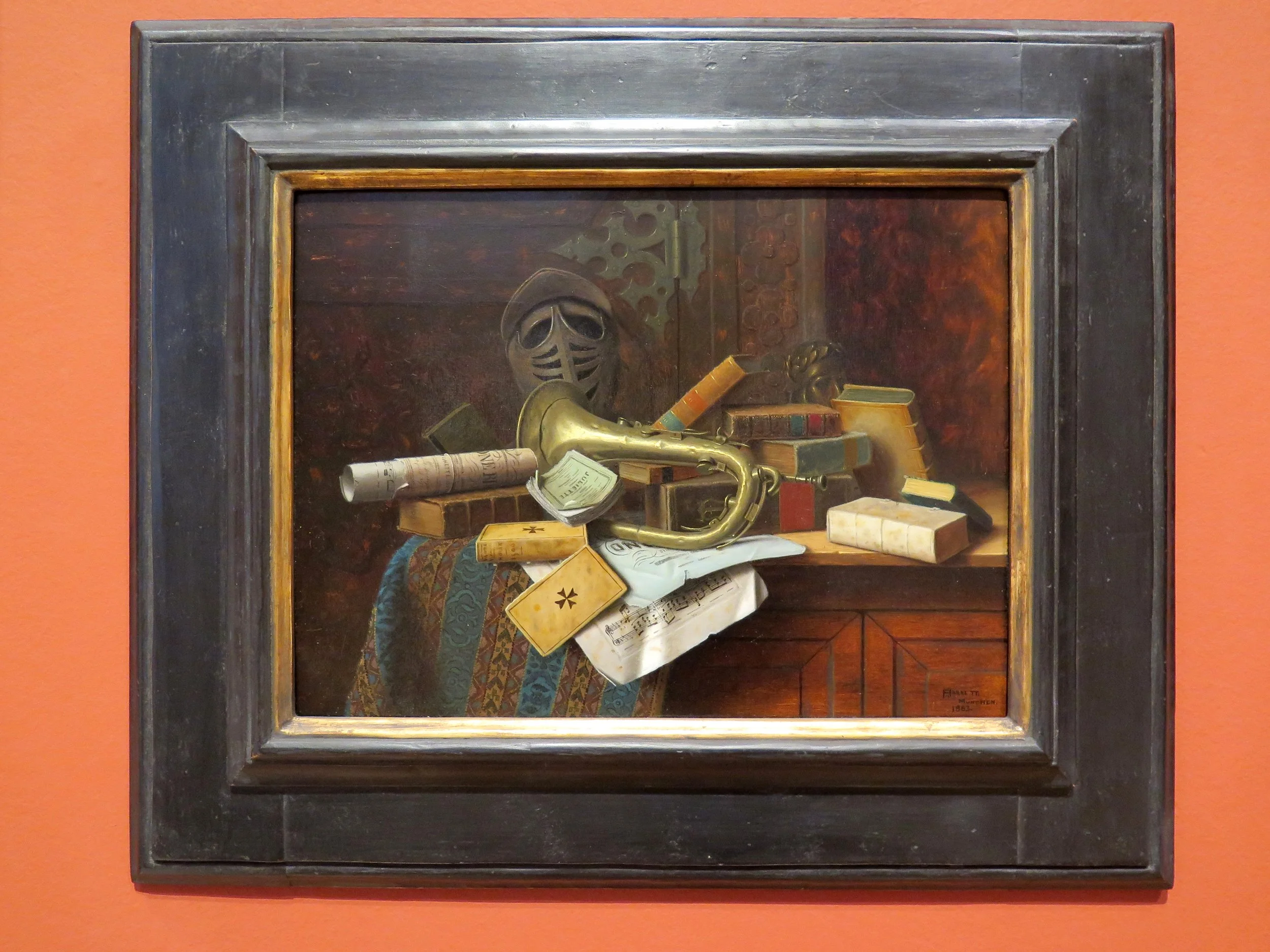


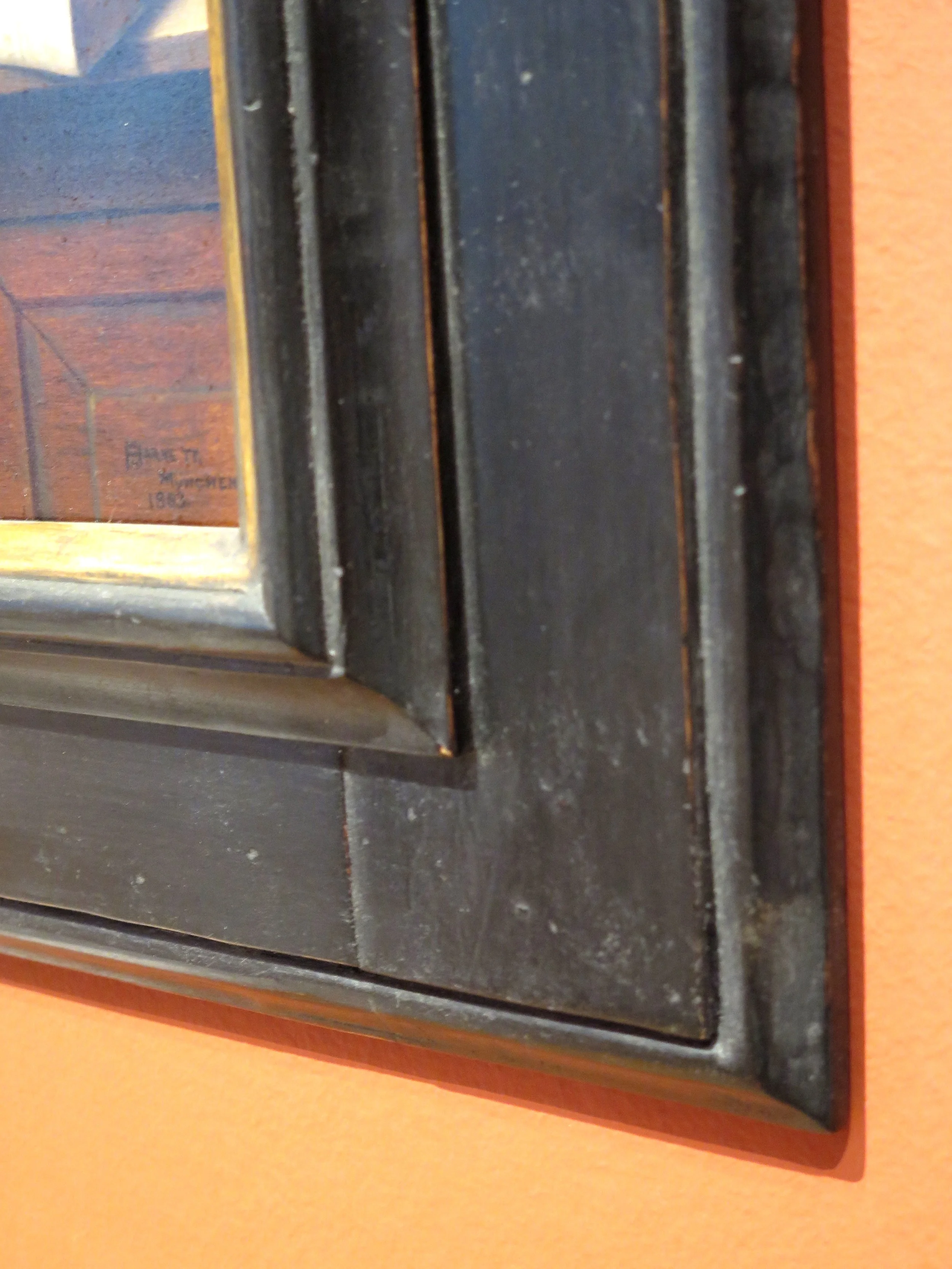
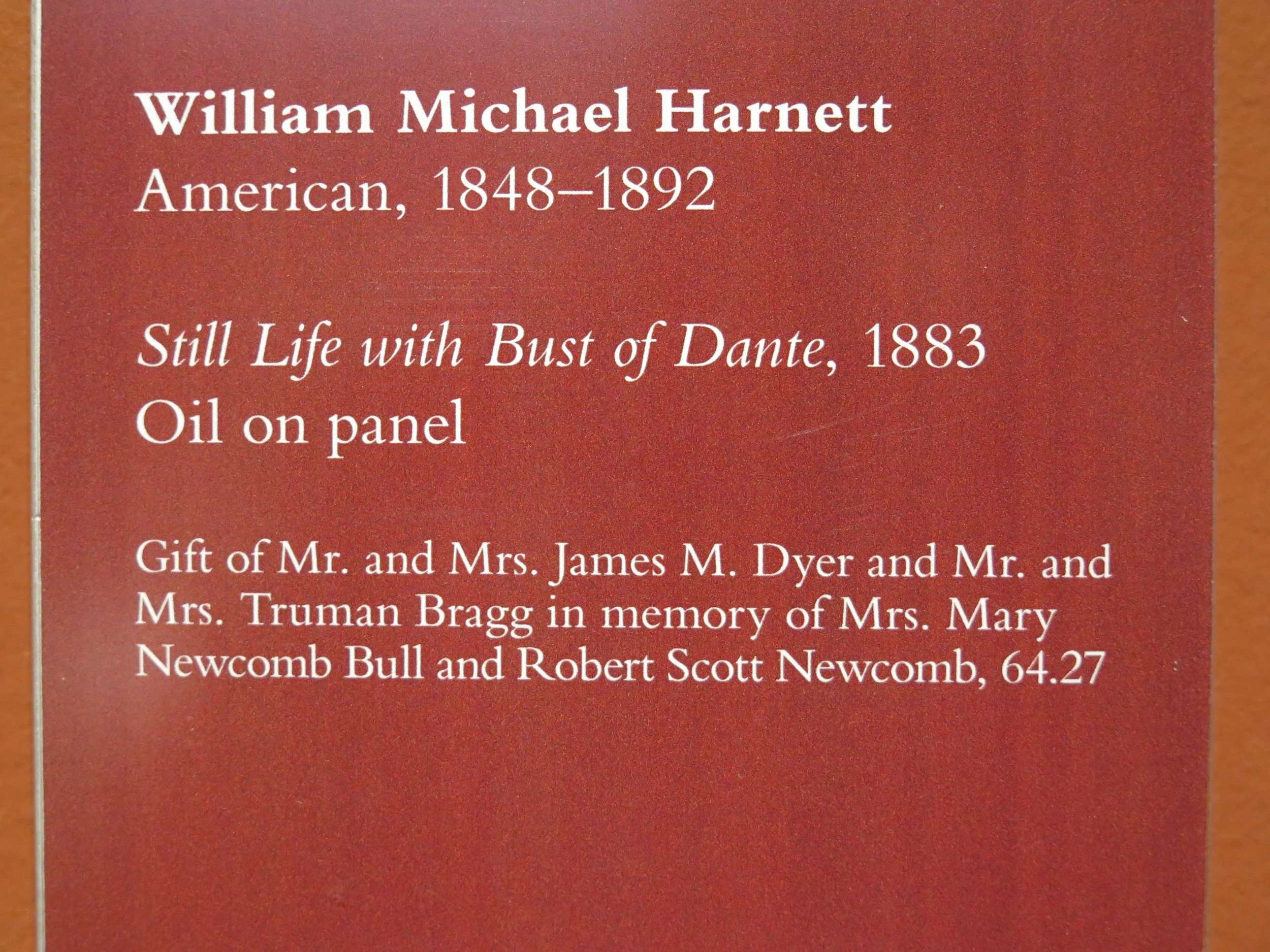
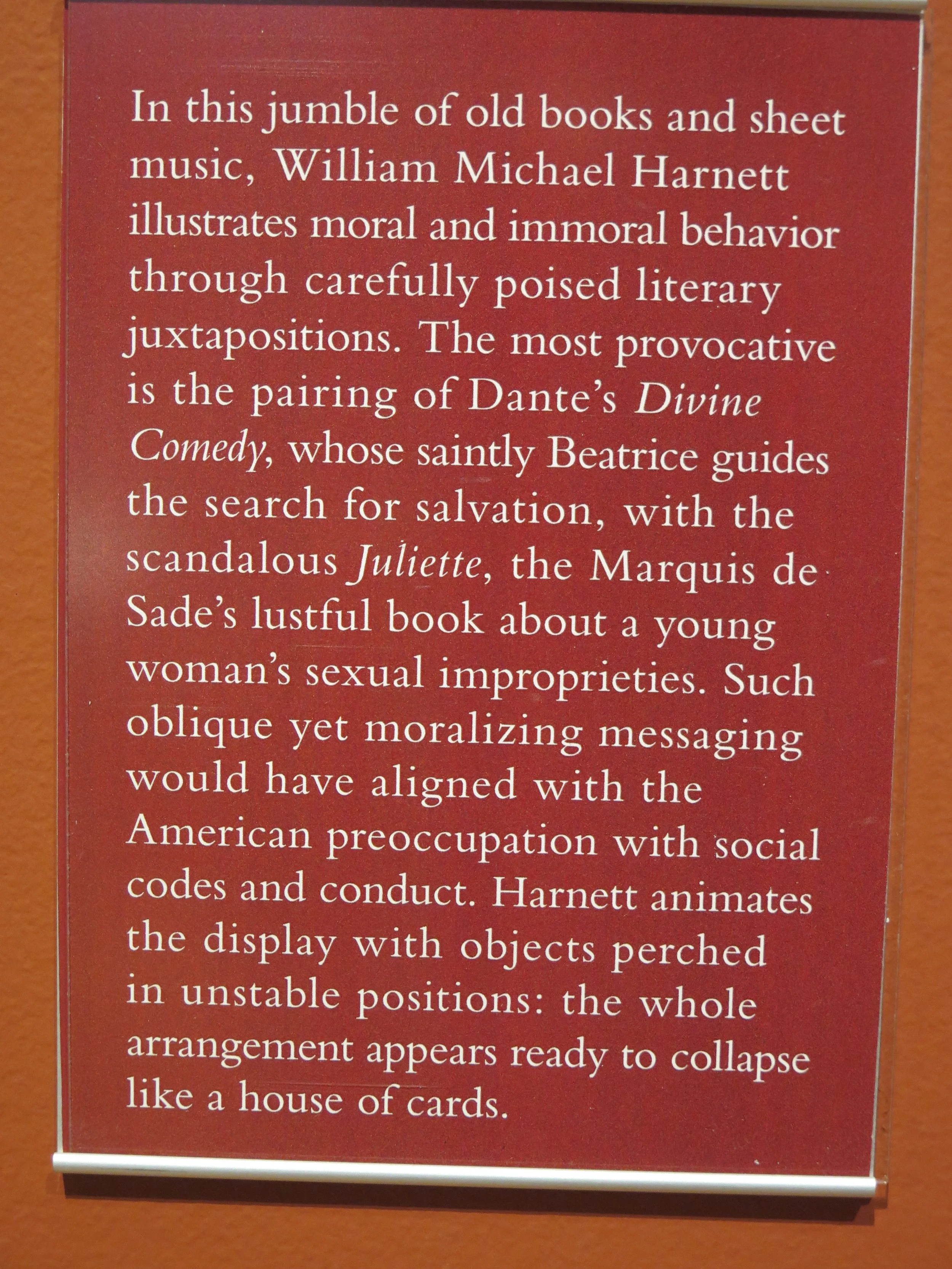
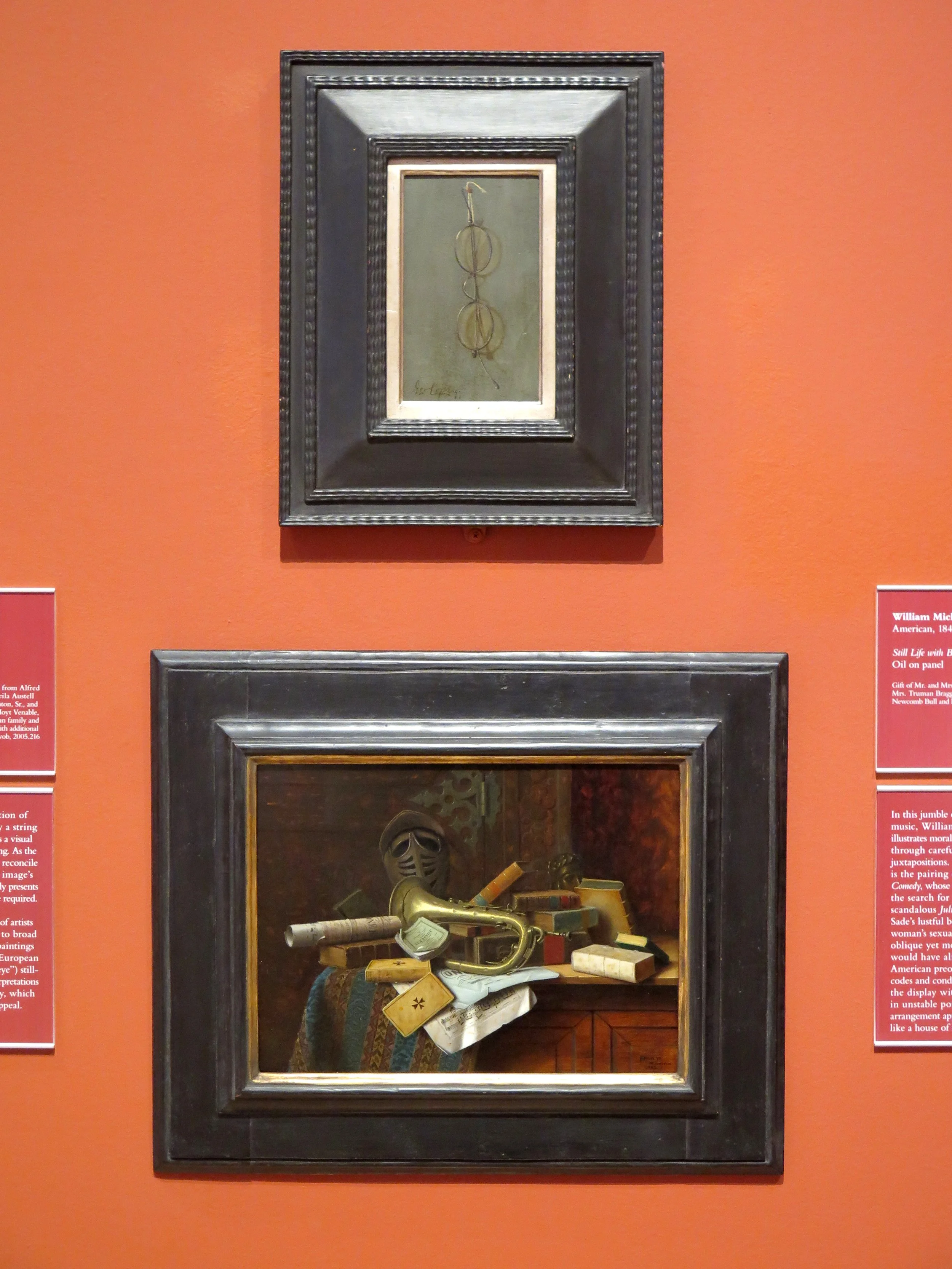



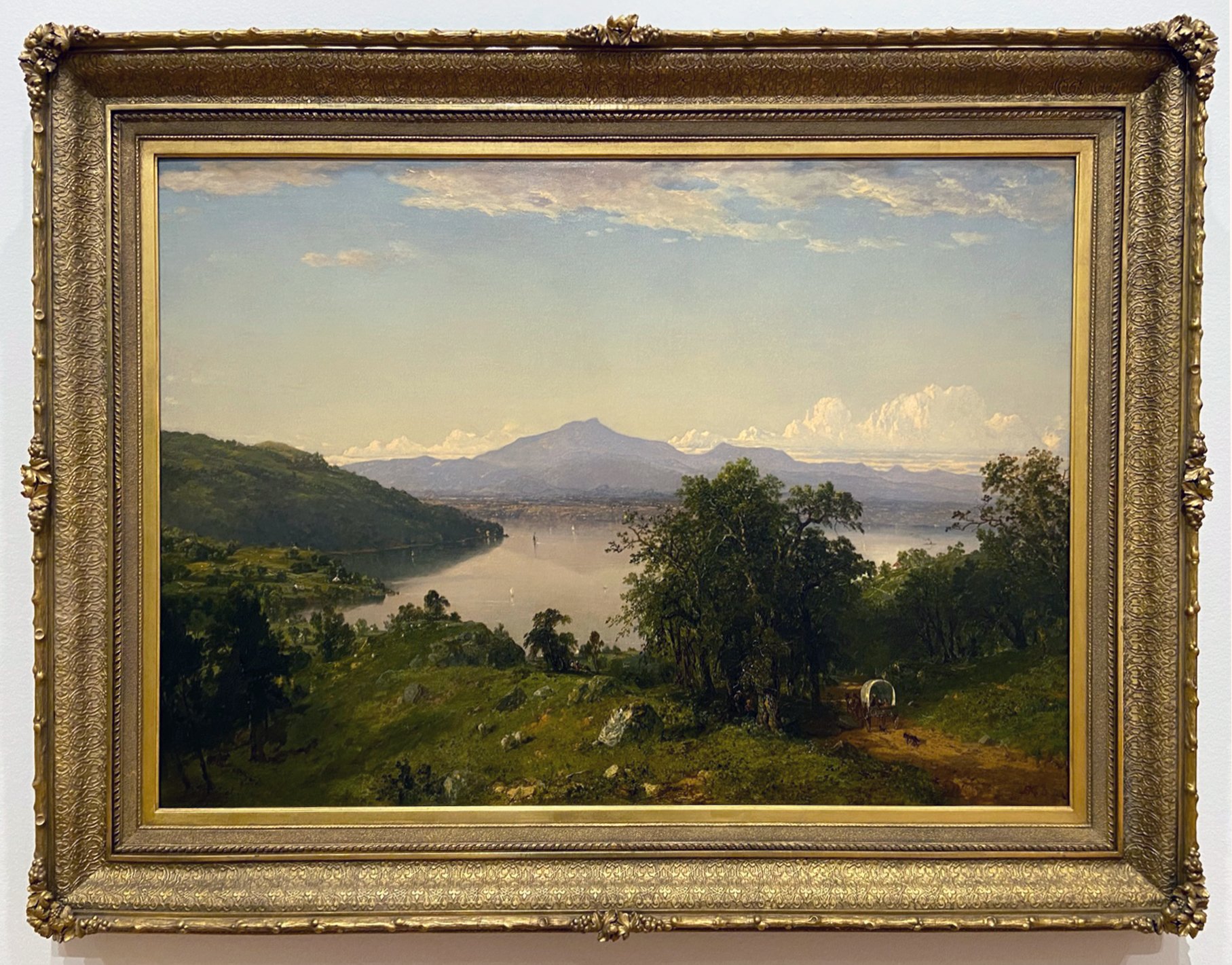
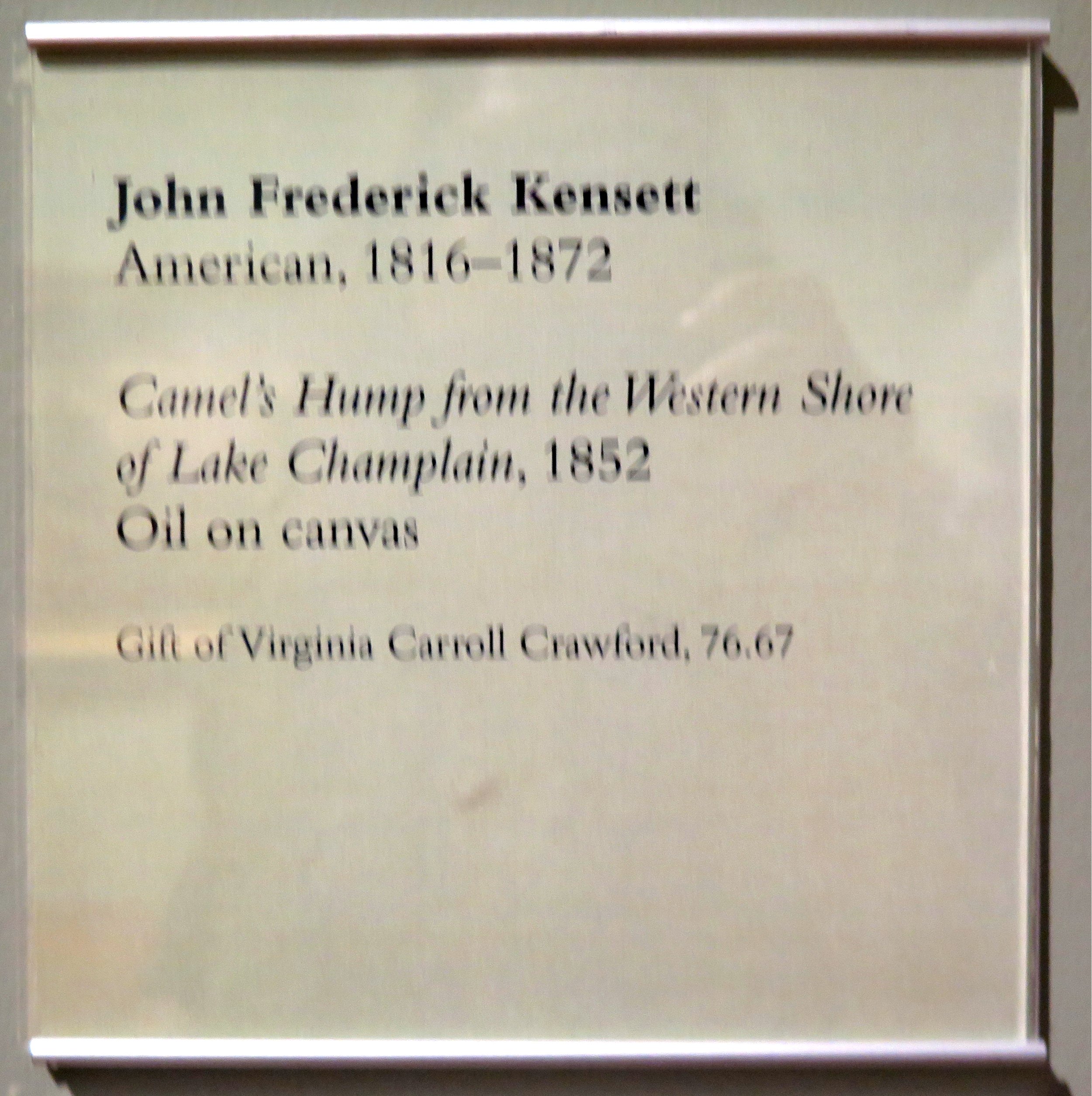

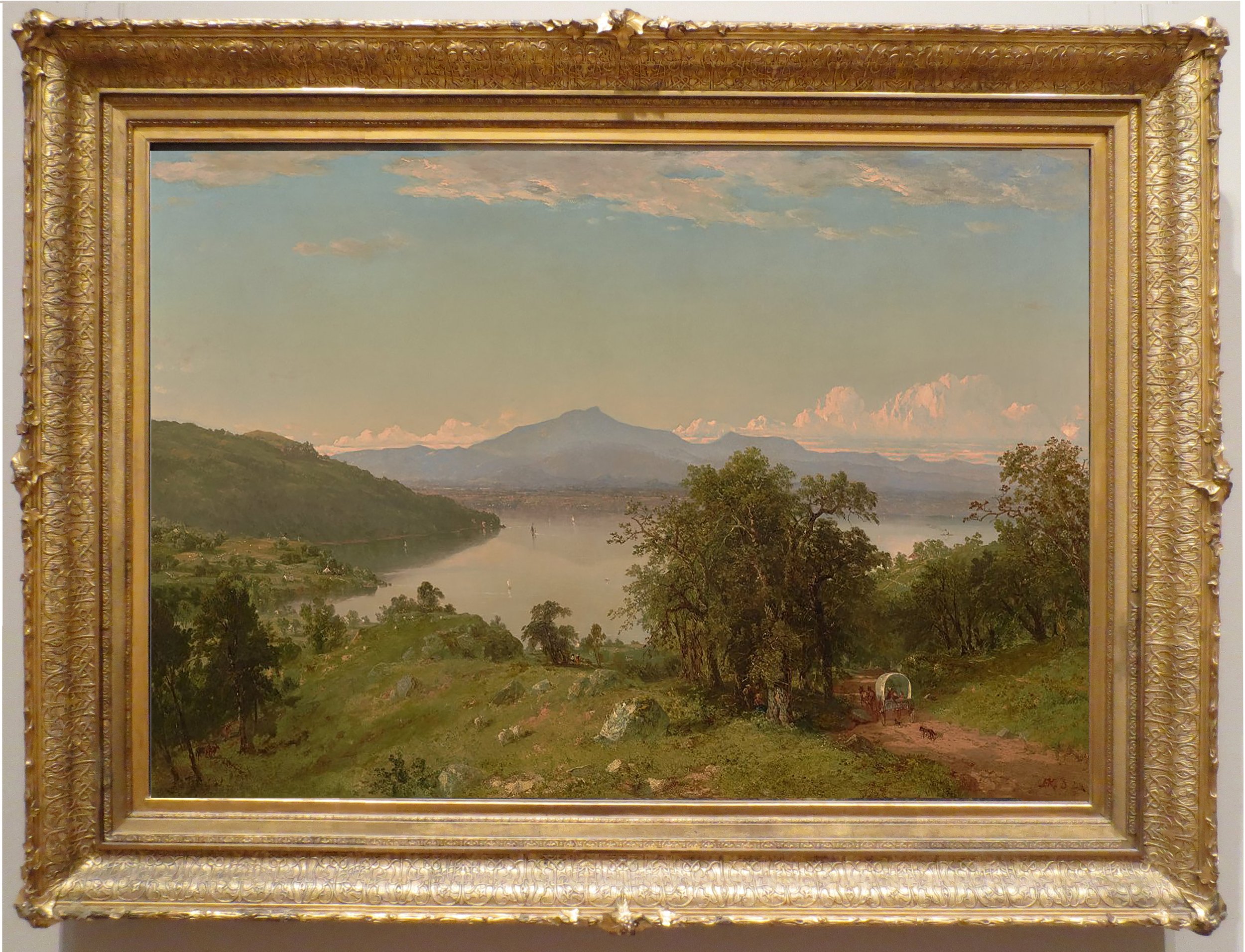

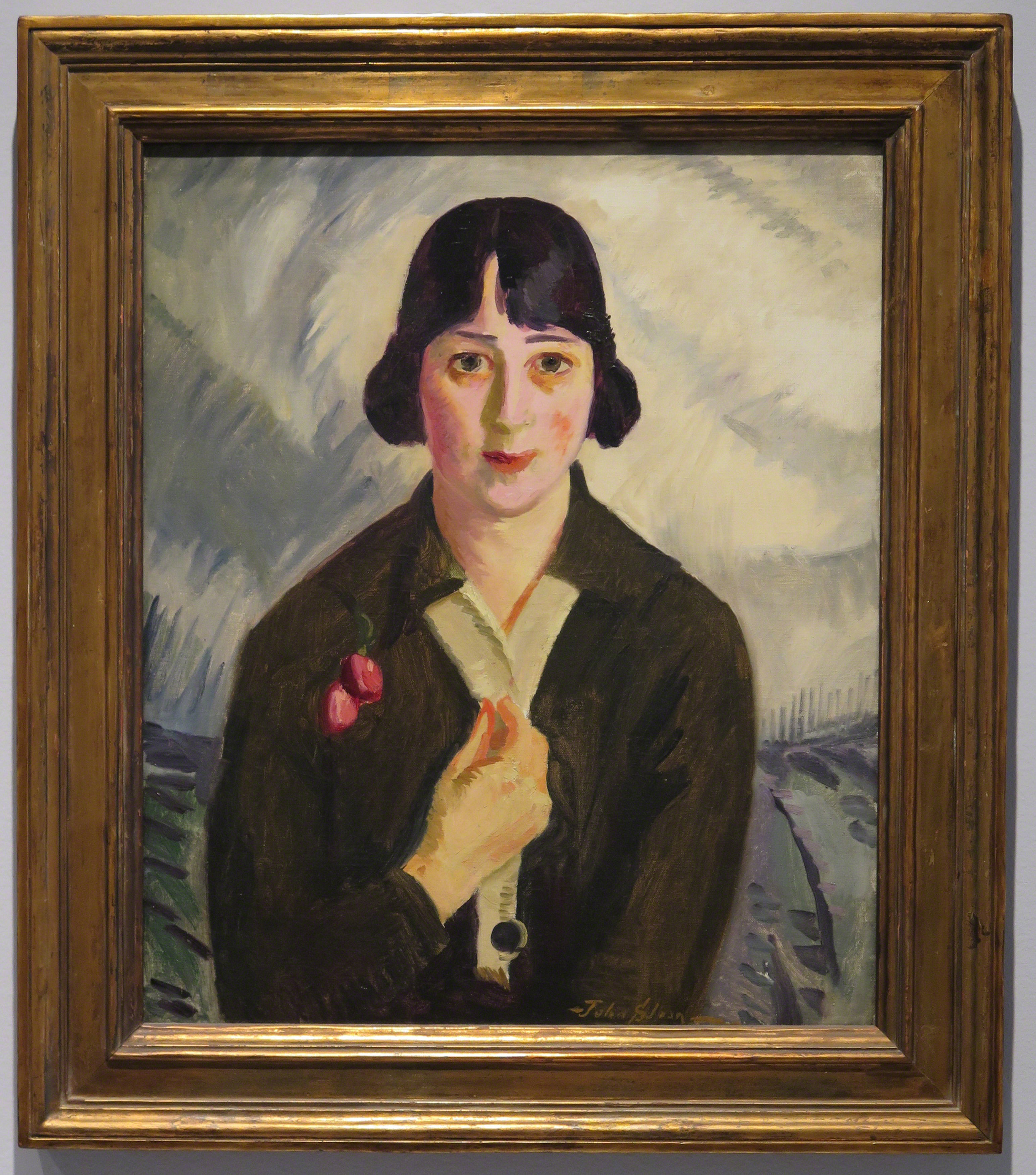
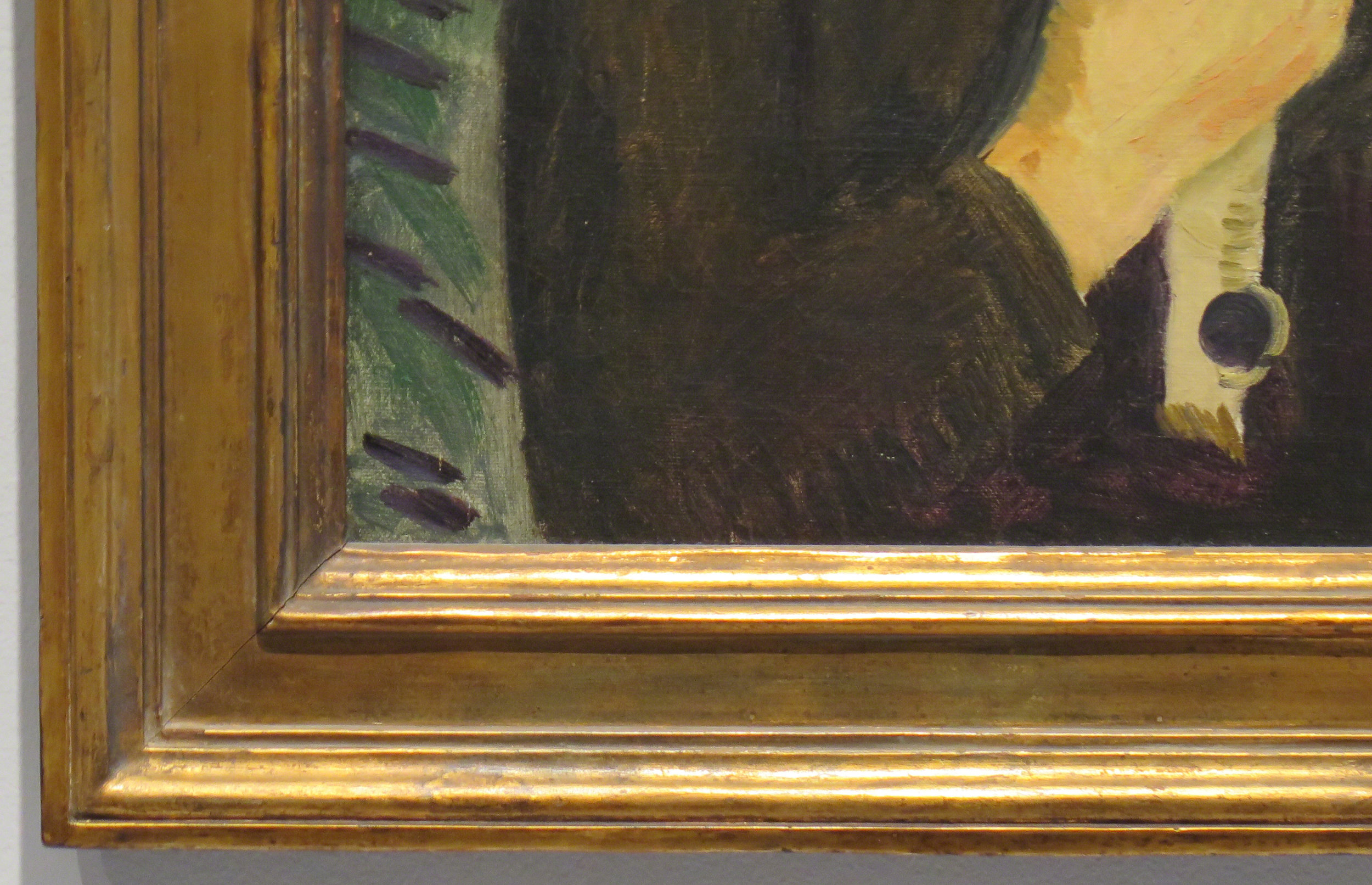



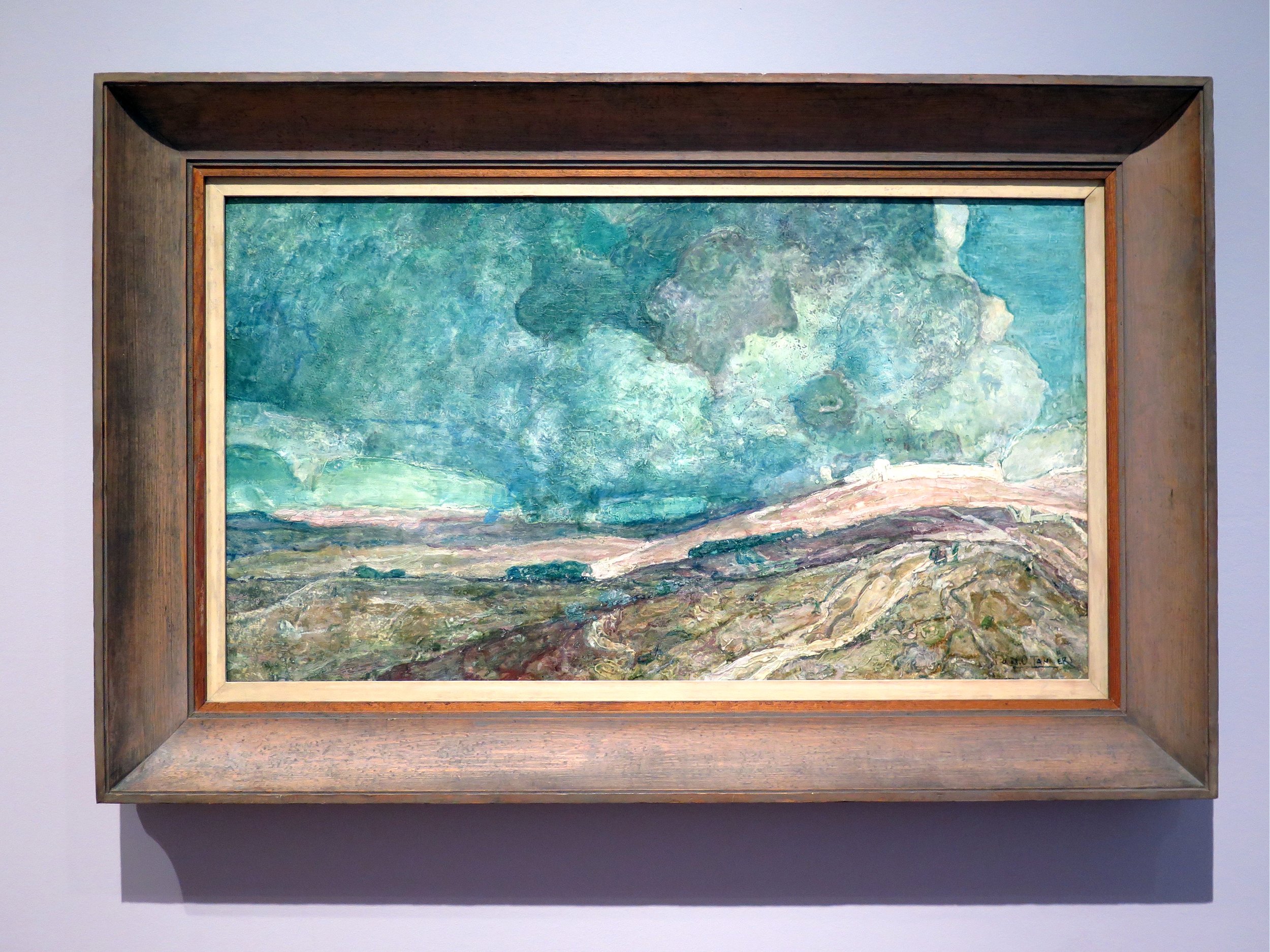

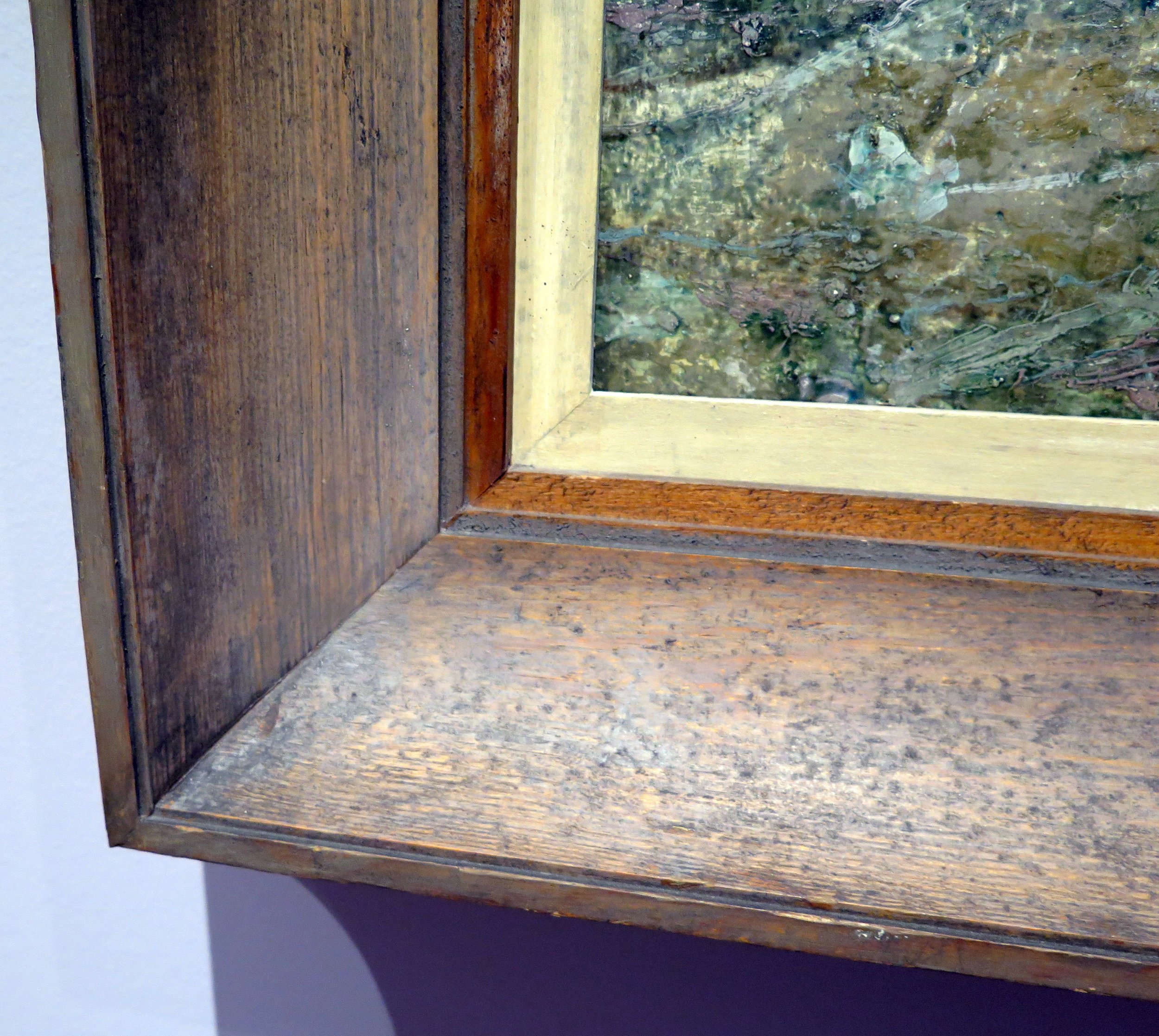

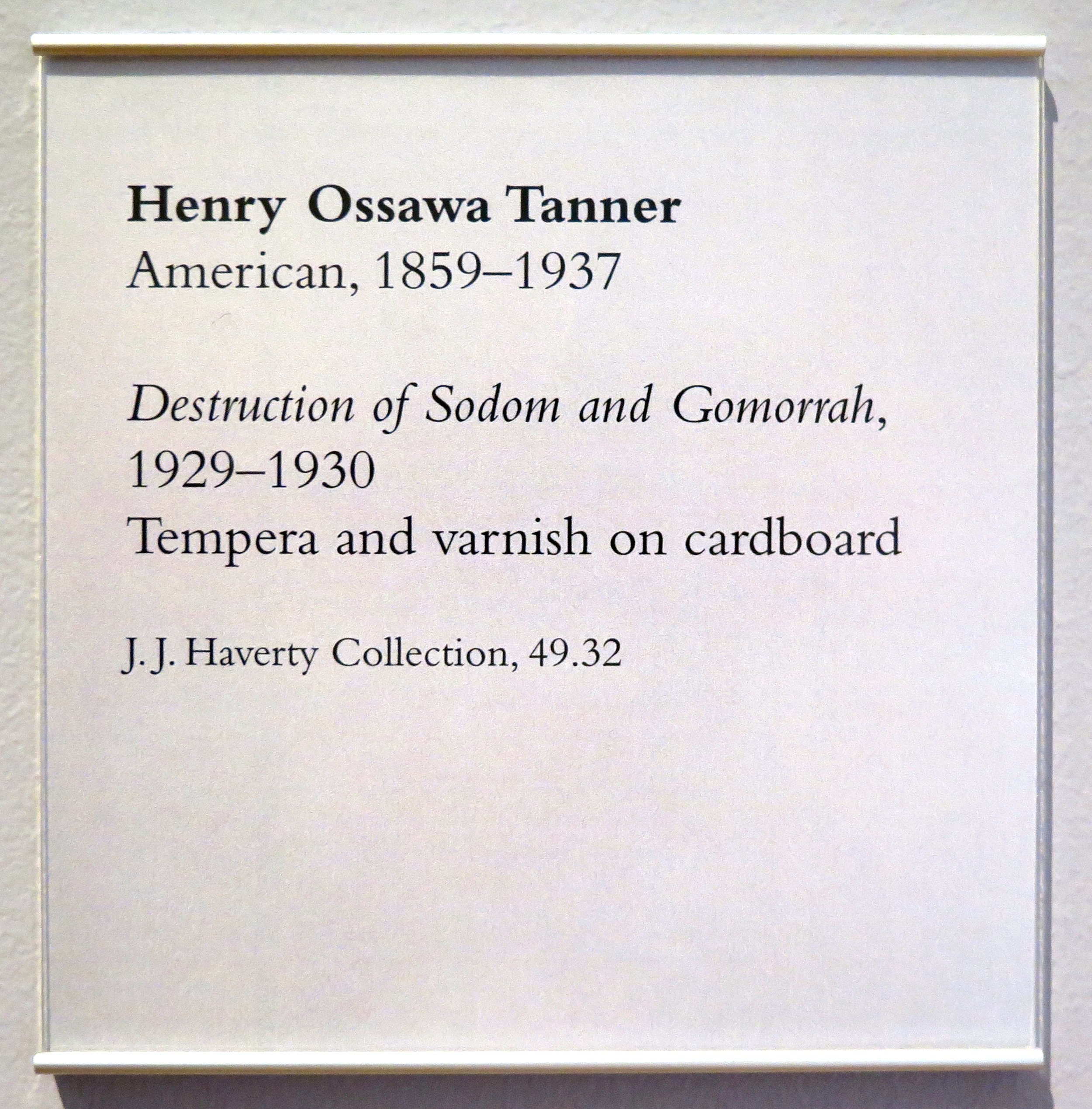



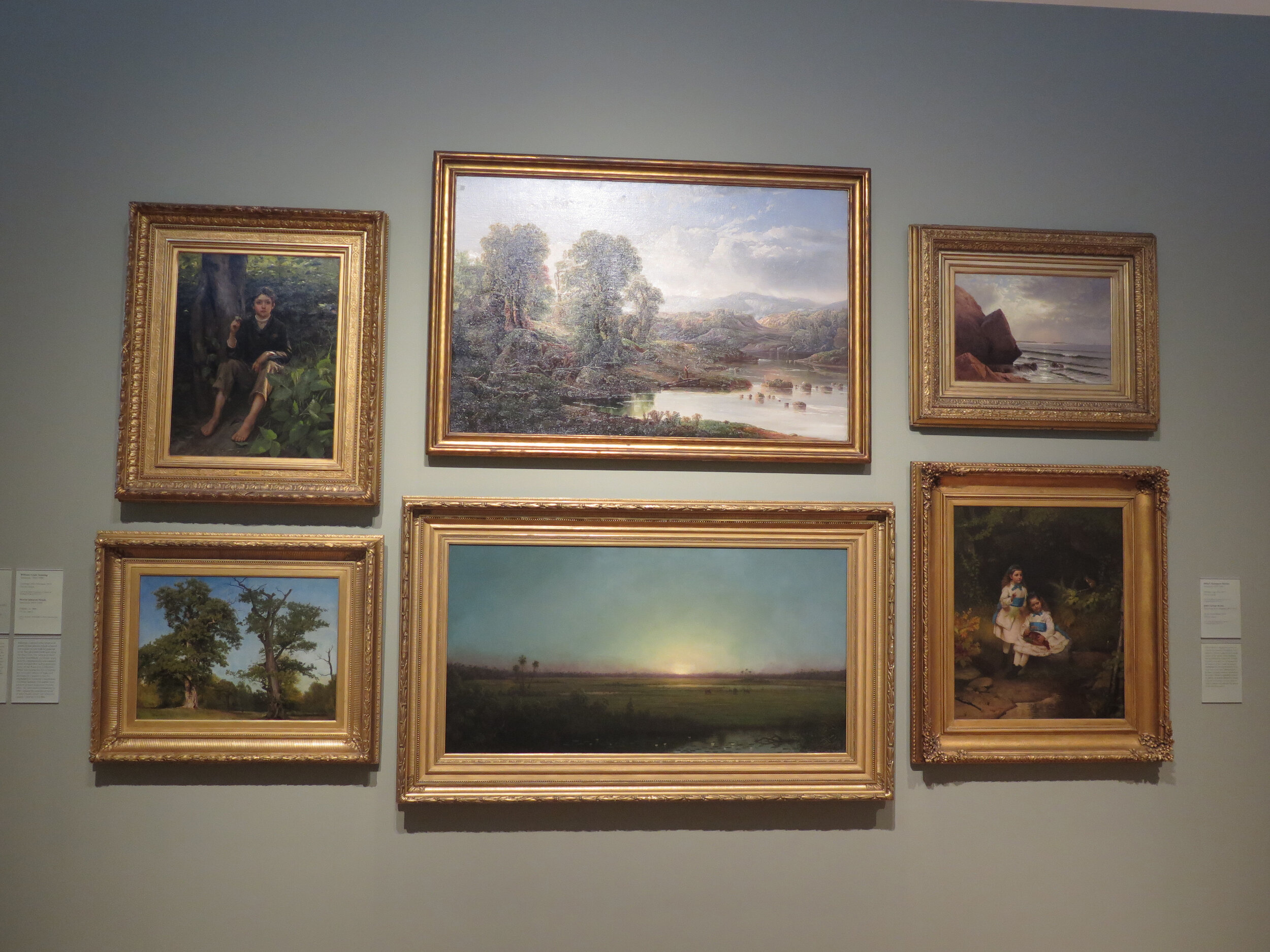
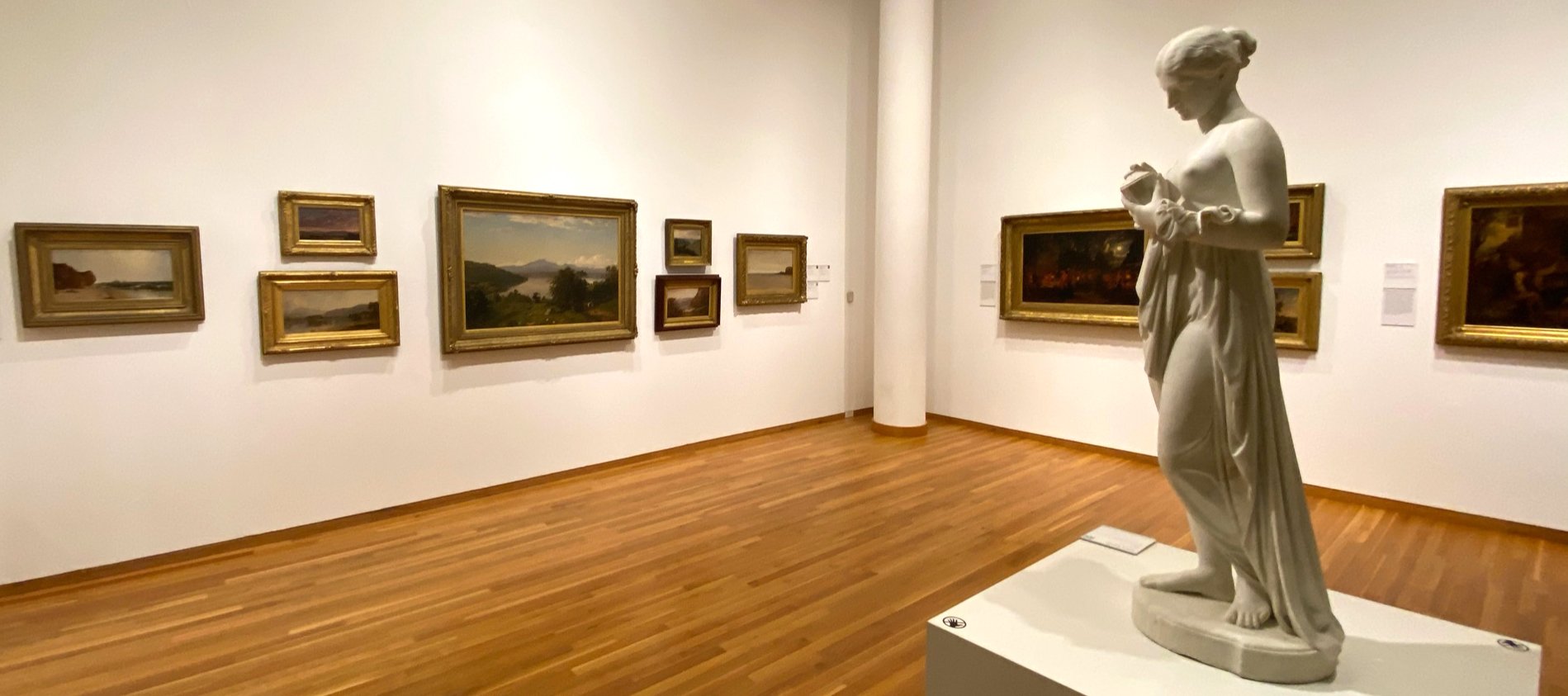
Your Custom Text Here
As of December 2023 Gill & Lagodich has worked on over 40 frames for the High Museum, provided period and replica frames, or restoration of museum frames.
Listed alphabetically, selected Gill & Lagodich framing projects for the High Museum of Art include provision of period frames for Albert Bierstadt, Pioneers of the Woods, California, ca. 1863; William Mason Brown, Peaches on a White Plate, ca. 1880; Patrick Henry Bruce, Leaves, 1912; William Merritt Chase, Still Life with Fish, ca. 1910; James Goodwyn Clonney, Boy Asleep At The Base of A Tree, 1845; Frank Joseph Currier, Munich Landscape, c. 1880s; Joseph Decker, Still Life with Peanuts, ca. 1890; Robert S. Duncanson, Woodland Stream, An Idyll by the Bridge, ca. 1865; George Henry Durrie, Farmstead in Winter, 1860; Alvan Fisher, The Homecoming, ca. 1835; Seymour Joseph Guy, Dinnertime, 1880; Samuel Lancaster Gerry, Appalachian Mountain Sharecroppers, ca. 1870s; Childe Hassam, Seascape—Isle of Shoals, 1902; May Hallowell, Blessed, pastel portrait, ca. 1880s; Martin Johnson Heade, Twilight, ca. 1886; Martin Johnson Heade, Two Hummingbirds With An Orchid, 1875, (G&L period outside frame surrounds museum’s original frame liner); Alfred Cornelius Howland, Fourth of July Parade, ca. 1886; John F. Kensett, Camels Hump...Western Shore...Lake Champlain, 1852; Ernest Lawson, Washington Bridge, Harlem River, ca. 1915; Jervis McEntee, The Hudson River Valley, c. 1874; William Trost Richards, Lake Scene, Boating, 1861; Joshua Shaw, View in the Pennsylvania Countryside, 1823; John Sloan, Quaker Nell (Helen M. Taylor), 1916; William Louis Sonntag, On Valley River, Virginia, 1864; Henry Ossawa Tanner, Destruction of Sodom and Gomorrah, 1929-30; Henry Ossawa Tanner, View of Fez, ca. 1912; Elihu Vedder, Waves at Palo, 1874; Thomas Worthington Whittredge, Rolling Hills, 1846; Hale Woodruff, Old Farmhouse in Beauce Valley, ca. 1927; Hale Woodruff, Results of Good Housing, ca. 1941-43; Hale Woodruff, Results of Poor Housing, ca. 1941-43; and George Wright, I Won't, 1887.
Custom replication of original period frames from the G&L Collection and custom-designed frames made for Milton Avery, Sally with Skull, 1946; Asher B. Durand, View Near Rutland, Vermont, 1837; Ralph Earl, Portrait of David Baldwin, 1790; William Harnett, Still Life with a Bust of Dante, 1883; George Inness, A Bit of the Roman Aqueduct, 1852; George Inness, The Passing Storm, 1892; Norman Lewis, Untitled (Barker and Crowd), c. 1960; George L.K. Morris, Concretion, 1936.
rRestoration of period Stanford White frame original to Thomas Wilmer Dewing, A Reading (or Woman in Windsor Chair), ca. 1909.
Restoration of museum’s period frames for John William Casilear, Alpine Lake, 1860; Thomas Doughty, Lake Scene, 1833, and Robert Street, Portrait of a Man, 1830.
As of December 2023 Gill & Lagodich has worked on over 40 frames for the High Museum, provided period and replica frames, or restoration of museum frames.
Listed alphabetically, selected Gill & Lagodich framing projects for the High Museum of Art include provision of period frames for Albert Bierstadt, Pioneers of the Woods, California, ca. 1863; William Mason Brown, Peaches on a White Plate, ca. 1880; Patrick Henry Bruce, Leaves, 1912; William Merritt Chase, Still Life with Fish, ca. 1910; James Goodwyn Clonney, Boy Asleep At The Base of A Tree, 1845; Frank Joseph Currier, Munich Landscape, c. 1880s; Joseph Decker, Still Life with Peanuts, ca. 1890; Robert S. Duncanson, Woodland Stream, An Idyll by the Bridge, ca. 1865; George Henry Durrie, Farmstead in Winter, 1860; Alvan Fisher, The Homecoming, ca. 1835; Seymour Joseph Guy, Dinnertime, 1880; Samuel Lancaster Gerry, Appalachian Mountain Sharecroppers, ca. 1870s; Childe Hassam, Seascape—Isle of Shoals, 1902; May Hallowell, Blessed, pastel portrait, ca. 1880s; Martin Johnson Heade, Twilight, ca. 1886; Martin Johnson Heade, Two Hummingbirds With An Orchid, 1875, (G&L period outside frame surrounds museum’s original frame liner); Alfred Cornelius Howland, Fourth of July Parade, ca. 1886; John F. Kensett, Camels Hump...Western Shore...Lake Champlain, 1852; Ernest Lawson, Washington Bridge, Harlem River, ca. 1915; Jervis McEntee, The Hudson River Valley, c. 1874; William Trost Richards, Lake Scene, Boating, 1861; Joshua Shaw, View in the Pennsylvania Countryside, 1823; John Sloan, Quaker Nell (Helen M. Taylor), 1916; William Louis Sonntag, On Valley River, Virginia, 1864; Henry Ossawa Tanner, Destruction of Sodom and Gomorrah, 1929-30; Henry Ossawa Tanner, View of Fez, ca. 1912; Elihu Vedder, Waves at Palo, 1874; Thomas Worthington Whittredge, Rolling Hills, 1846; Hale Woodruff, Old Farmhouse in Beauce Valley, ca. 1927; Hale Woodruff, Results of Good Housing, ca. 1941-43; Hale Woodruff, Results of Poor Housing, ca. 1941-43; and George Wright, I Won't, 1887.
Custom replication of original period frames from the G&L Collection and custom-designed frames made for Milton Avery, Sally with Skull, 1946; Asher B. Durand, View Near Rutland, Vermont, 1837; Ralph Earl, Portrait of David Baldwin, 1790; William Harnett, Still Life with a Bust of Dante, 1883; George Inness, A Bit of the Roman Aqueduct, 1852; George Inness, The Passing Storm, 1892; Norman Lewis, Untitled (Barker and Crowd), c. 1960; George L.K. Morris, Concretion, 1936.
rRestoration of period Stanford White frame original to Thomas Wilmer Dewing, A Reading (or Woman in Windsor Chair), ca. 1909.
Restoration of museum’s period frames for John William Casilear, Alpine Lake, 1860; Thomas Doughty, Lake Scene, 1833, and Robert Street, Portrait of a Man, 1830.
Curator Close-Up: Stephanie Heydt
Frame consultants Tracy Gill and Simeon Lagodich in conversation with Stephanie Heydt, the High Museum’s Margaret and Terry Stent Curator of American Art. Learn about the project Stephanie undertook to enhance the galleries by pairing American paintings with appropriate antique frames. Working with the High since 2003, Gill & Lagodich have framed thirty-nine paintings and restored four period frames from the museum’s collection, including an important Stanford White grille frame for Thomas Wilmer Dewing’s “A Reading,” 1909.
Frame It Up! Changing Fashions of American Frames 18th- to 20th-Century
LIVE (ZOOM) EVENT with STEPHANIE HEYDT, TRACY GILL, and SIMEON LAGODICH. An evening devoted to American frames and their fascinating history. This virtual event explored the changing styles of frame fashion from the eighteenth through the twentieth centuries. This special focus comes at the conclusion of a multiyear special initiative to examine and upgrade frames for the High’s collection. Stephanie Heydt, Margaret and Terry Stent Curator of American Art, was in conversation with frame historians Simeon Lagodich and Tracy Gill, founders of Gill & Lagodich Fine Period Frame Gallery, New York. The evening included a presentation on American frame history, a tour of the High’s American art collection, and a Q&A session to field questions about the “art around the art”—the art of the frame.
MILTON AVERY (1885–1965)
Sally with Skull, 1946, oil on canvas, 33" x 26", custom-made replica American modernist frame, ebonized rough-sawn wood; molding width 3-1/2"
ALBERT BIERSTADT (1830–1902)
Pioneers of the Woods, California, ca. 1863, oil on paper mounted on canvas, 19 x 26 inches. Period c. 1860s American Neo-classical Hudson River school painting frame, gilded applied ornament and sandwork panel on wood, original gilding and patina, molding width 5-1/2 inches. Painting Gift of the Exposition Foundation 71.27.
WILLIAM MERRITT CHASE (1849 – 1916)
Still Life With Fish, ca. 1910, oil on canvas, 14” x 18-1/8” framed by Gill & Lagodich for the High Museum of Art. 19th-century European painting frame; ebonized gesso and wood with gilded applied ornament sight edge, molding width: 4-7/8"
ASHER BROWN DURAND (1796–1886)
“View Near Rutland, Vermont,” 1837, oil on canvas, 29-1/4 x 36-1/4 in. Custom-made replica c. 1840s American frame, molding width 4-3/8 in. “Among the first American painters to dedicate himself to landscape, Asher Brown Durand was best known for his detailed renderings of America’s natural bounty. His early work as a watchmaker and engraver accounts for his fine, linear style. This quiet picnic scene boasts a romantic and lyrical spirit: the precisely rendered foliage and expansive vantage point express the beneficence of nature, a common theme among nineteenth-century landscape painters.” —museum label. Painting: Purchase with funds from Mrs. J. Mack Robinson.
SEYMOUR JOSEPH GUY (1824–1910)
Dinnertime, 1880, 21-5/8 x 15-1/16 inches. c. 1880s American Barbizon painting frame; gilded applied ornament on wood, bright original gilding, molding width: 6-3/8 in. Gift of the West Foundation in honor of Gudmund Vigtel.
MAY HALLOWELL (1860–1916)
Blessed, 1898, pastel on board. Framed by Gill & Lagodich, c. 1880s American Aesthetic-style frame, gilded applied composition ornament on wood. “The first work May Hallowell exhibited at the Paris Salon was a pastel portrait of a little girl, a medium that she used throughout her career. The inherent fragility of pastel pigments contributes to the ethereal mood of this picture, while the stable composition lends mass and weight to the figure. The model’s features are specific, as in a portrait, yet she is crowned with a halo. That detail, together with her solemn expression, the timeless style of her blue robe, and the vagueness of the setting, suggests an identification with the Virgin Mary, yet Hallowell leaves the meaning of the image open.” — museum label. Purchase with funds from the Lawrence and Alfred Fox Foundation for the Ralph K. Uhry Collection
WILLIAM MICHAEL HARNETT (1848–1892)
Still Life with Bust of Dante, 1883, oil on panel, 10-5/16 x 13-13/16 in. Custom-made hand-carved replica frame, 17th-century Spanish, reverse profile with gilded hollow sight edge, molding width 3-1/2 in.
CHILDE HASSAM (1859–1935)
Seascape--Isle of Shoals, 1902, oil on canvas, 29-1/8 x 37-1/2 inches, c. 1900 Stanford White-style American painting frame, gilded carved wood, attributed to Milch Galleries, New York frame makers.
JOHN FREDERICK KENSETT (1816–1872)
Camel’s Hump from the Western Shore of Lake Champlain, 1852, oil on canvas, 31-3/8 x 45-3/16 in. Period frame with custom replica liner element, c. 1850s American painting frame, attr. Goupil, New York; gilded applied composition ornament on wood, molding width ~6 in. “Kensett, one of the leading American artists of the 1850s, trained as an engraver before studying painting in Europe. Deeply attracted to the landscapes of New York and New England, he frequently depicted famous scenery, such as this view of Vermont’s Green Mountains from the New York shore of Lake Champlain. The picturesque conjunction of the undulating mountain range and New England’s largest lake accounted for its popularity with artists and tourists alike.” —High Museum label Painting: Gift of Virginia Carroll Crawford
JOHN SLOAN (1871–1951)
Quaker Nell (Helen M. Taylor), 1916, oil on canvas, 24 x 20 inches, PERIOD FRAME c. 1915-20 American Arts and Crafts/Ashcan painting frame; metal-gilded hand-carved wood; cassetta profile; molding width: 3-1/2” Painting gift of Mr. and Mrs. Norman Hirschl.
HENRY OSSAWA TANNER (1859–1937)
A View of Fez, ca. 1912, oil on panel, 9 x 12-1/2 in. Period c. 1915-20 American Arts and Crafts painting frame, Newcomb-Macklin Co., New York / Chicago makers, metal-gilded hand-carved wood, molding width 2-1/2 in. Painting Credit Gift of Dr. Richard A. Long.
HENRY OSSAWA TANNER (1859–1937)
Destruction of Sodom and Gomorrah, 1929–30, tempera and varnish on cardboard, 20-3/8 x 36 inches. Period c. 1930–40s American frame, molding width 4-1/2 in. “Famous for his biblical paintings, Henry Ossawa Tanner painted Destruction of Sodom and Gomorrah after two trips to Palestine. He used his favorite hue, the distinctive greenish-blue color dominating the sky, to portray the smoky conflagration engulfing the two cities. The painting’s abstraction and simplicity of form evoke a sense of interaction between the physical and spiritual worlds. Tanner downplays the presence of Lot and his daughters, barely visible at the lower right. His blend of tempera and oil unifies the composition and imparts an almost unearthly luminosity.” —museum didactic label Painting credit J. J. Haverty Collection